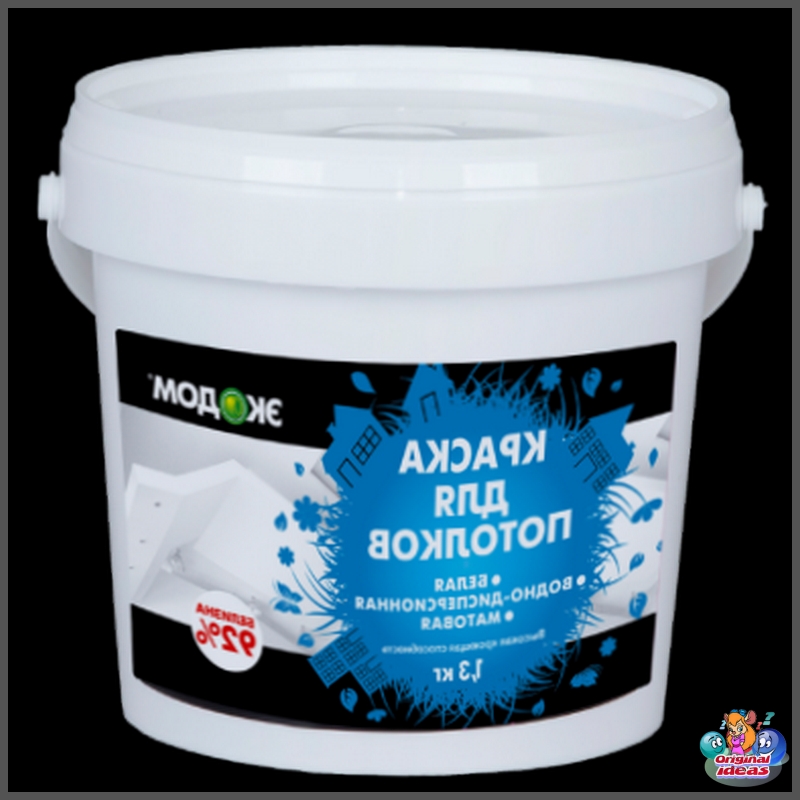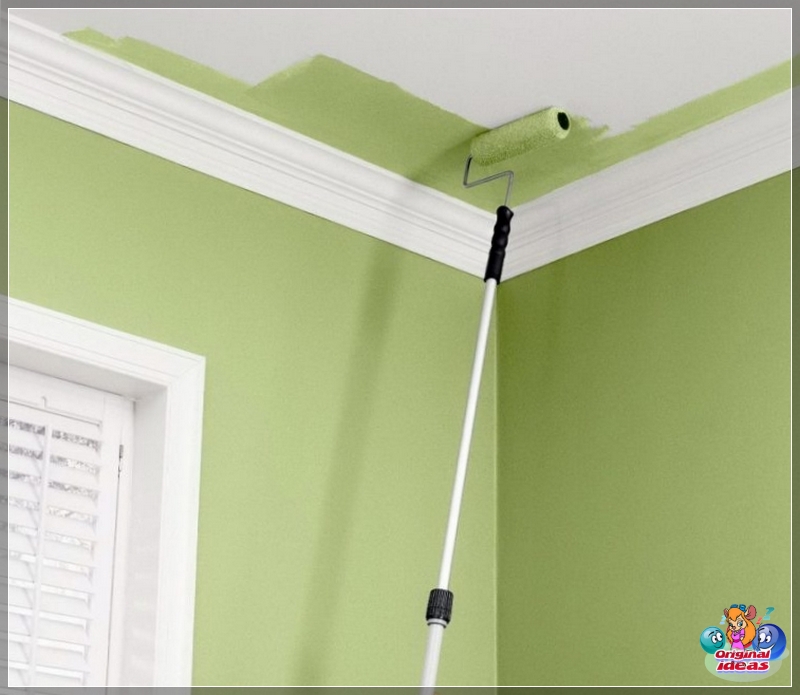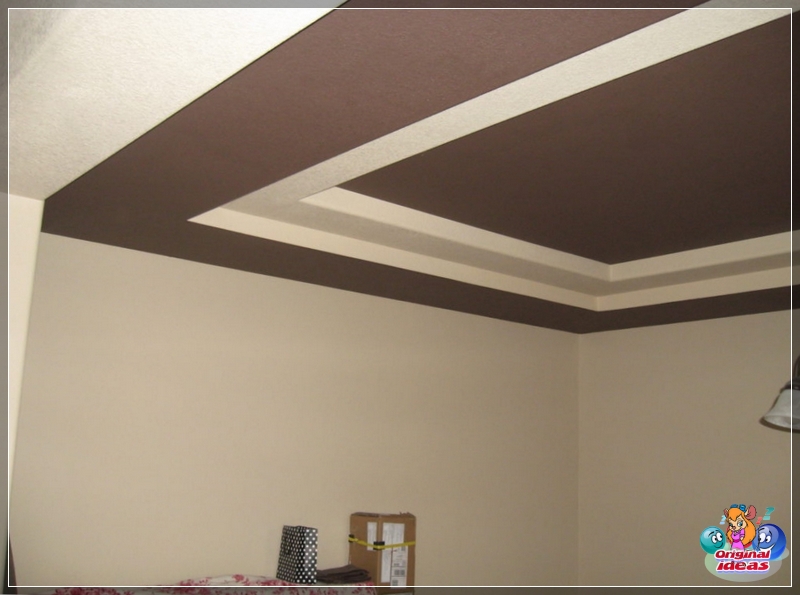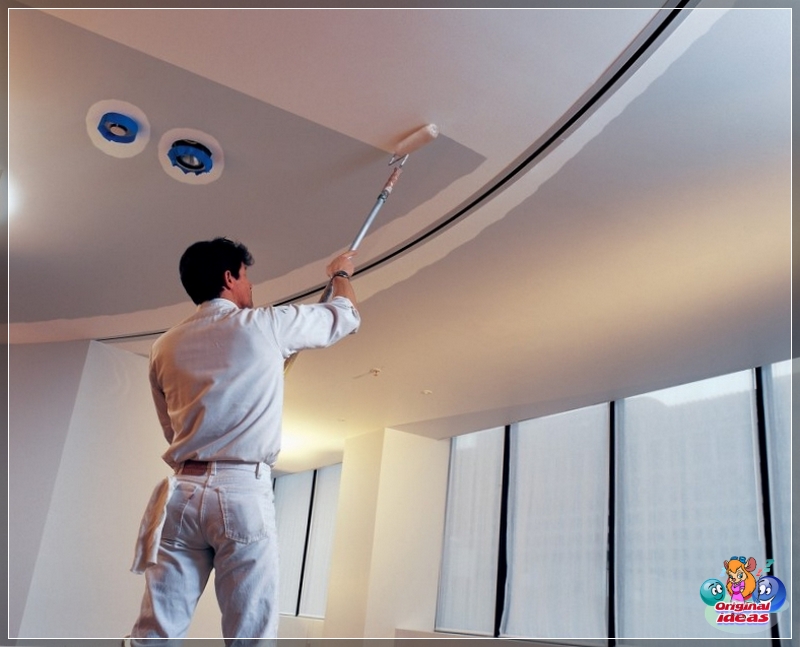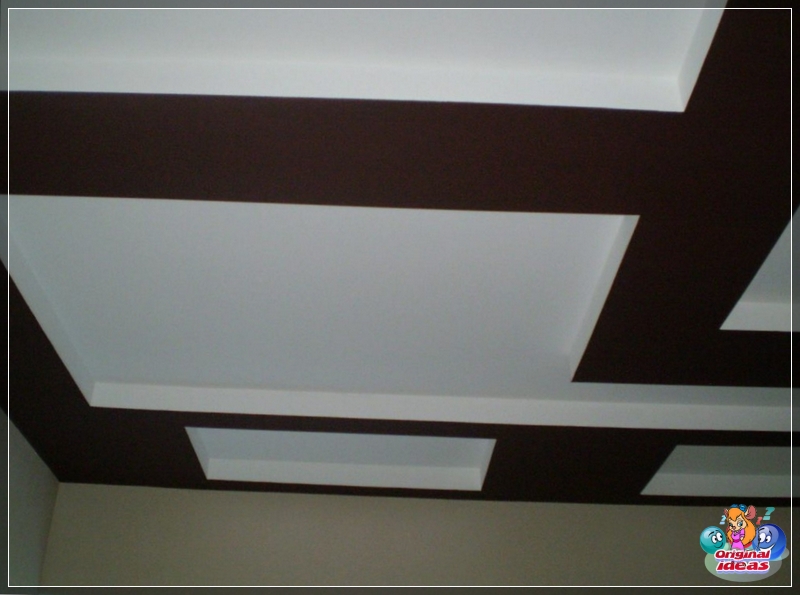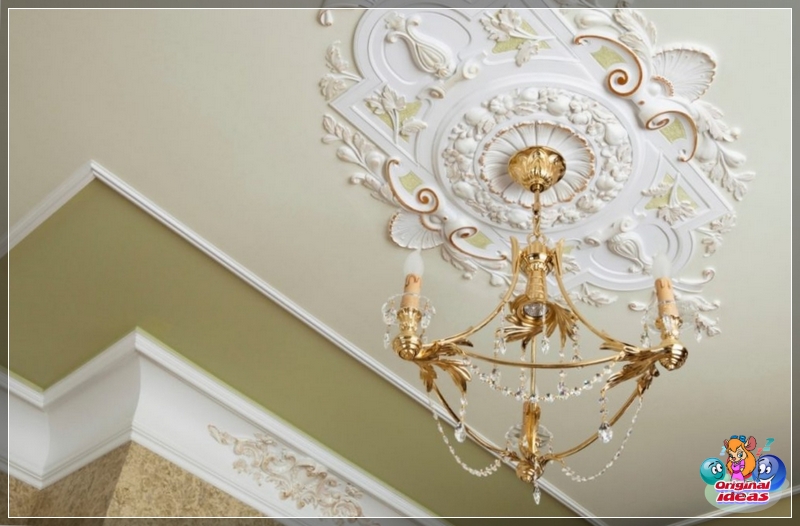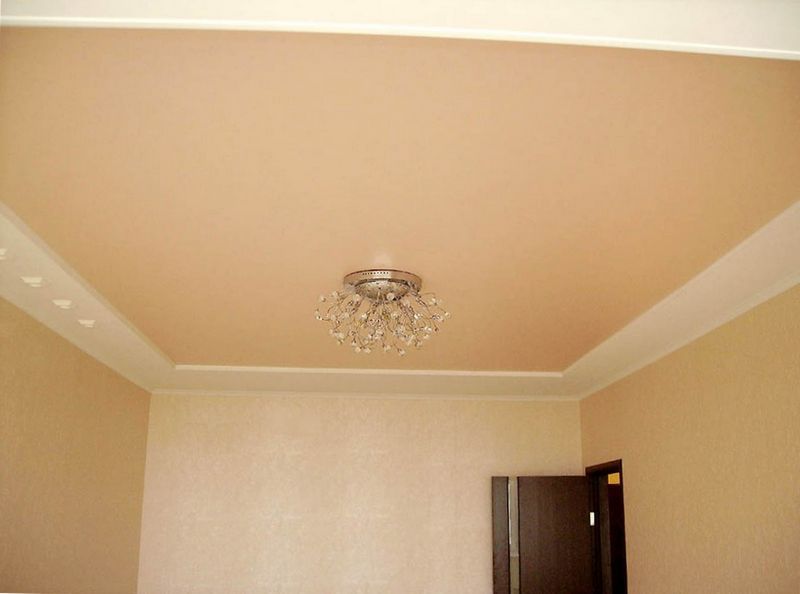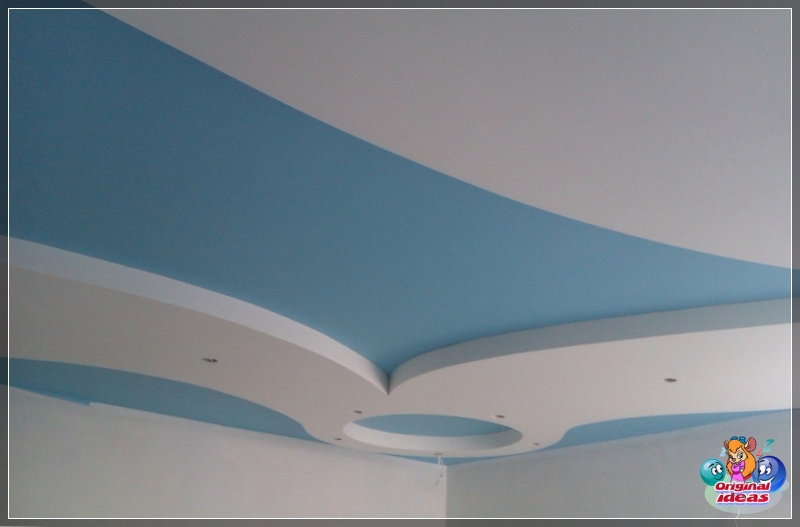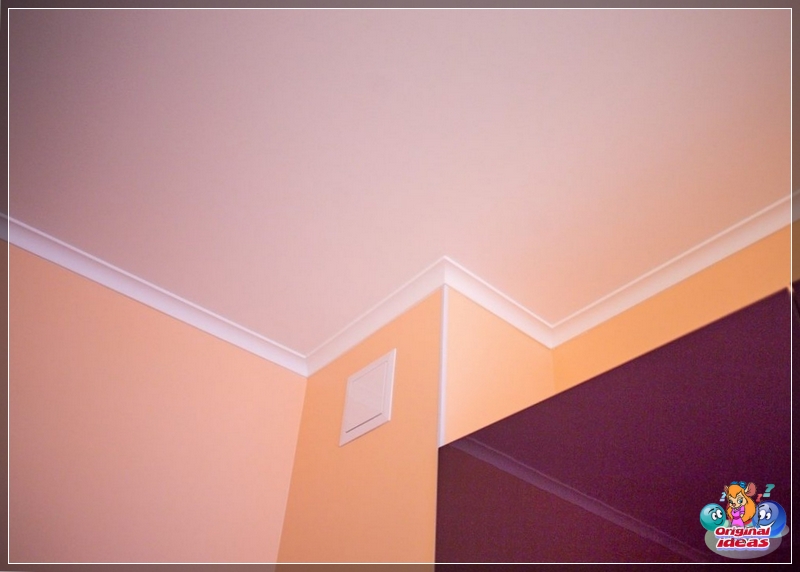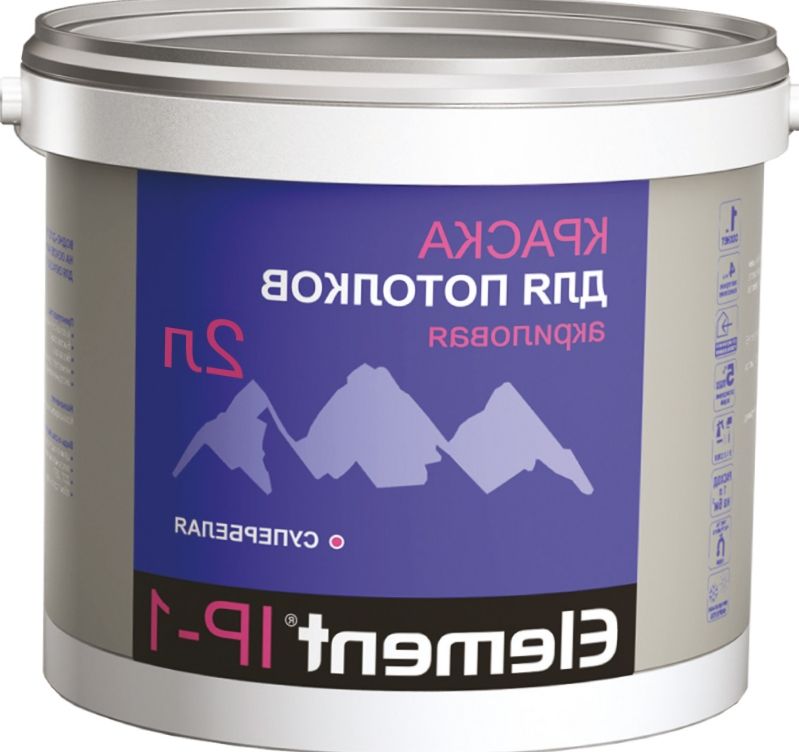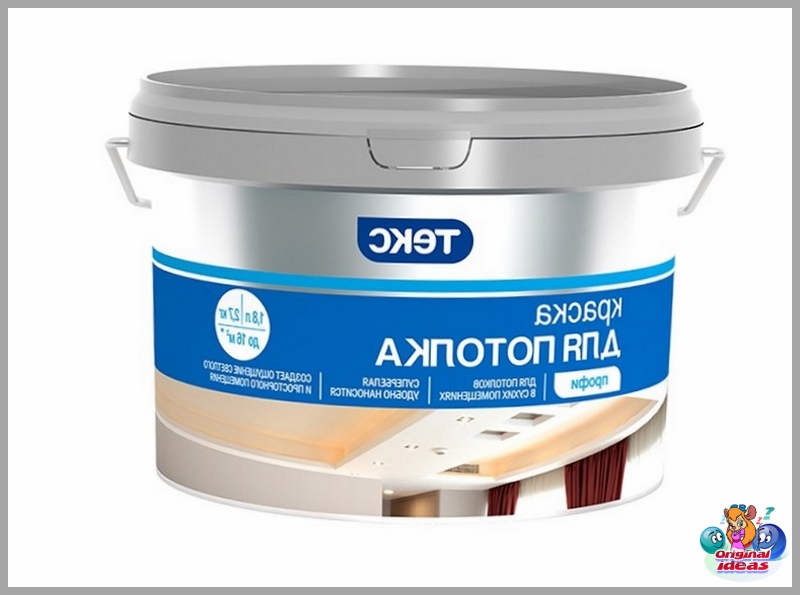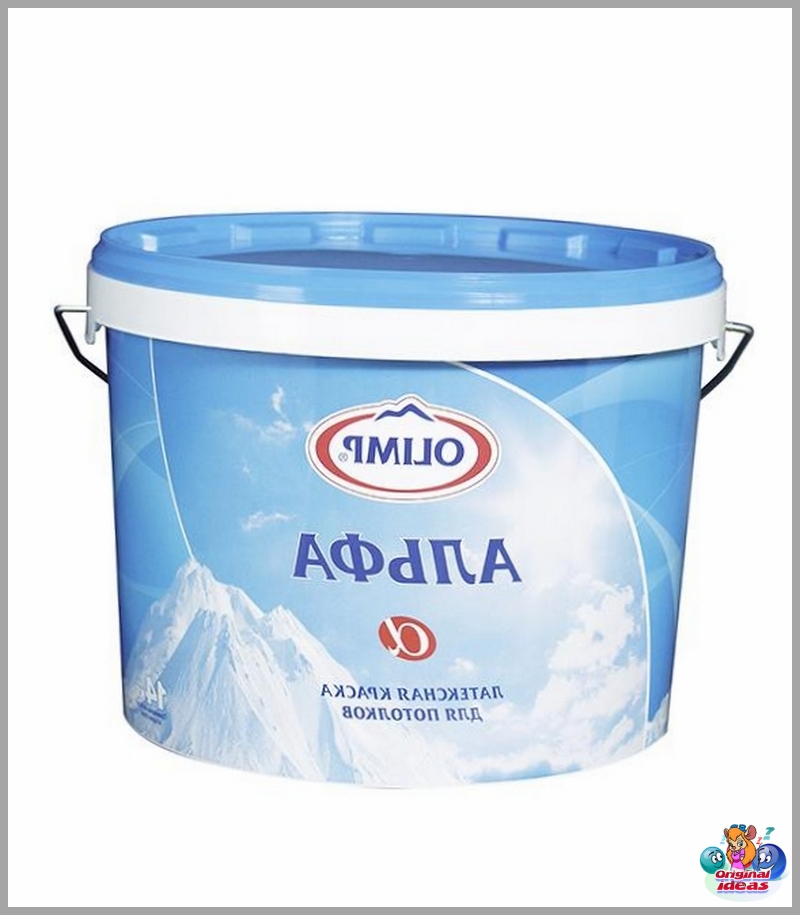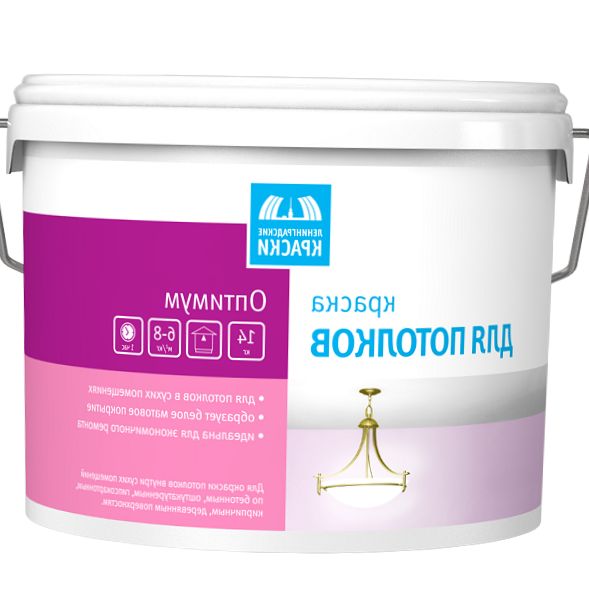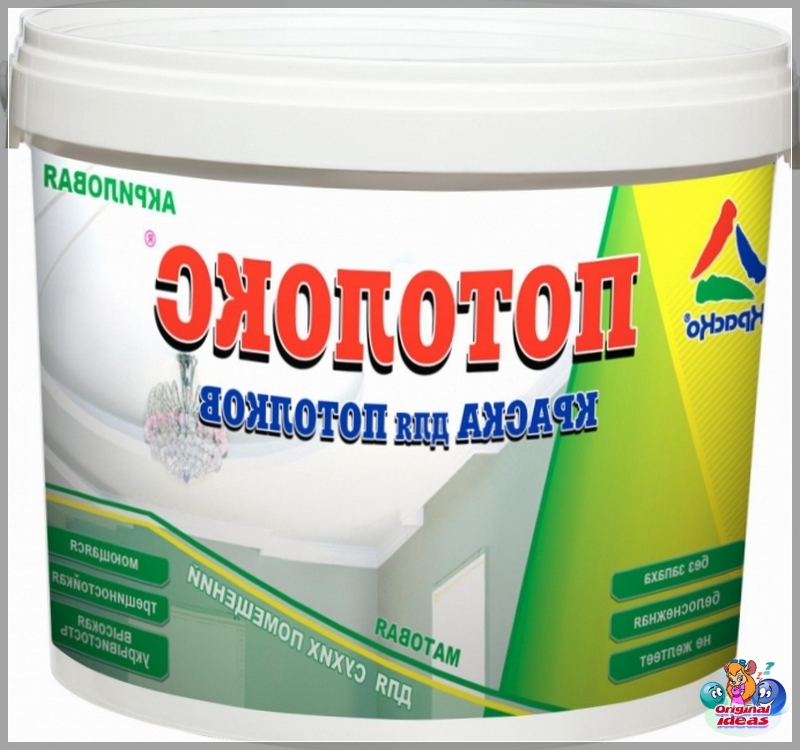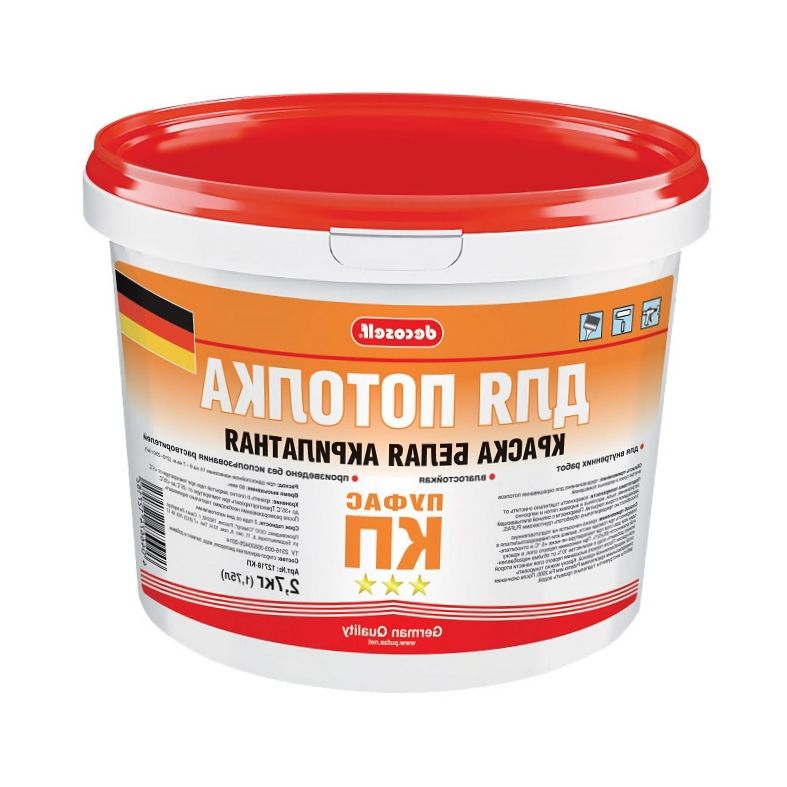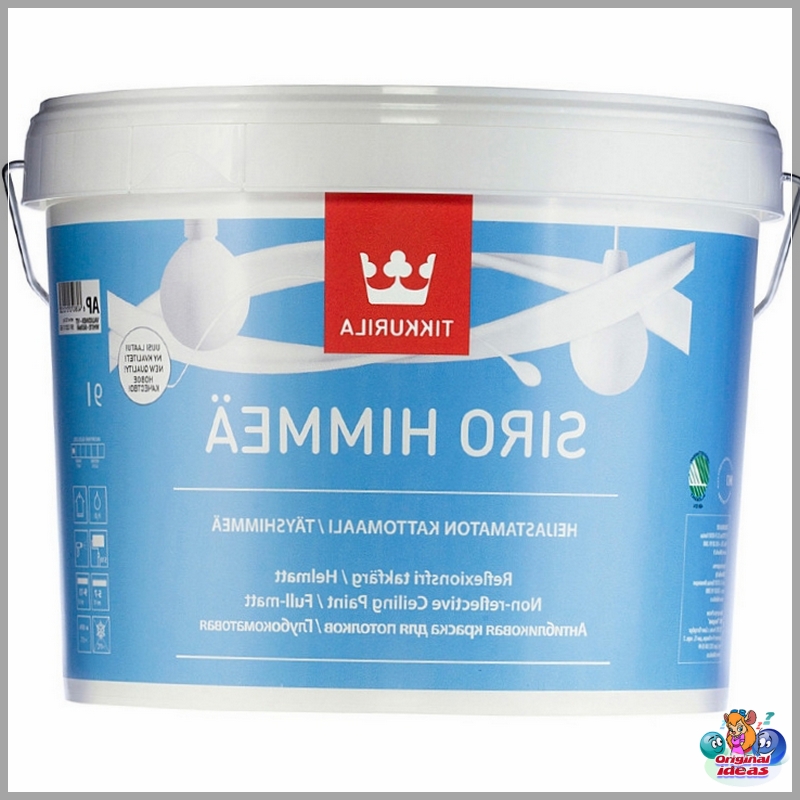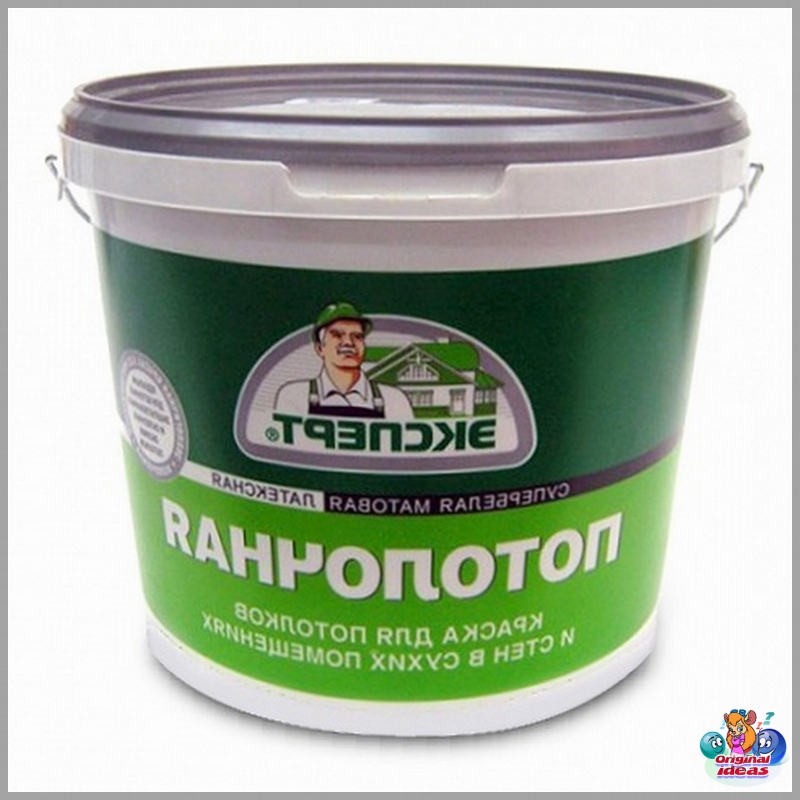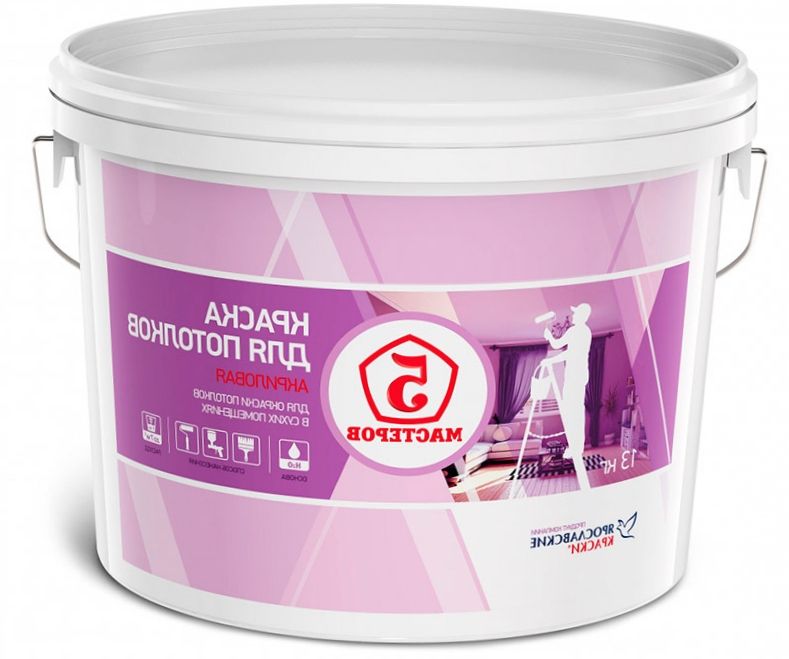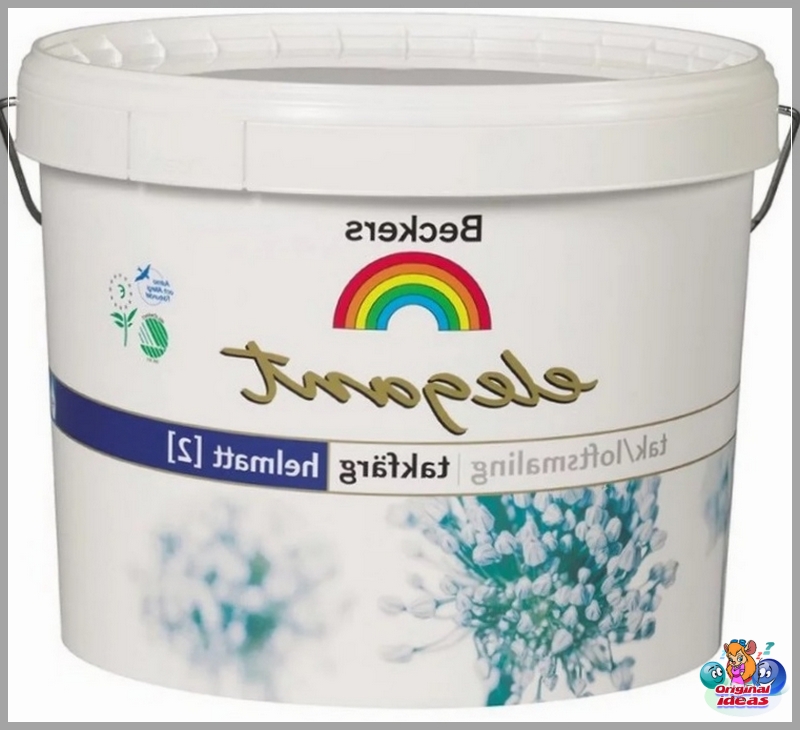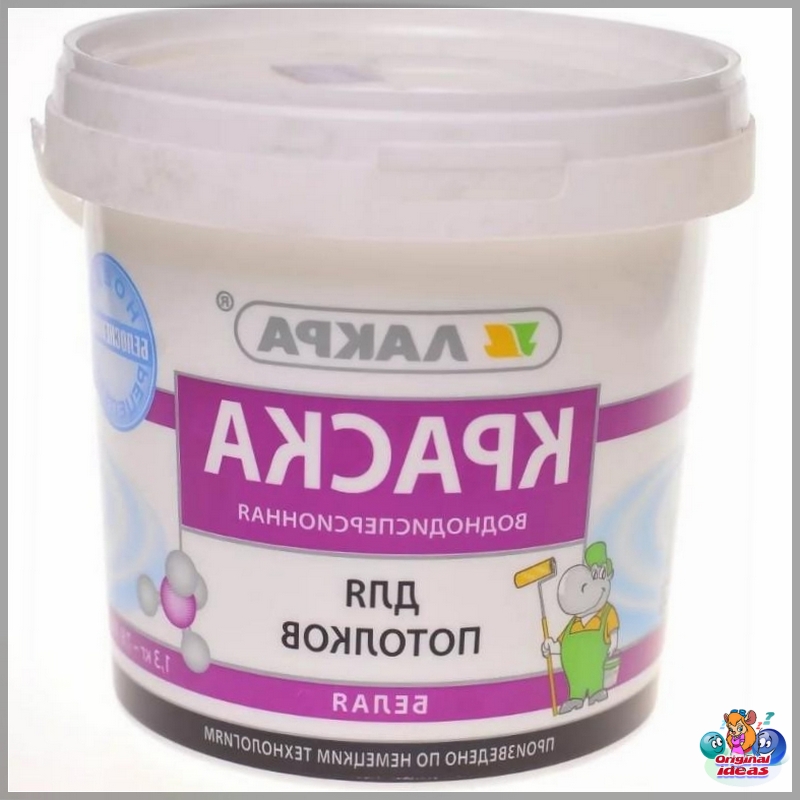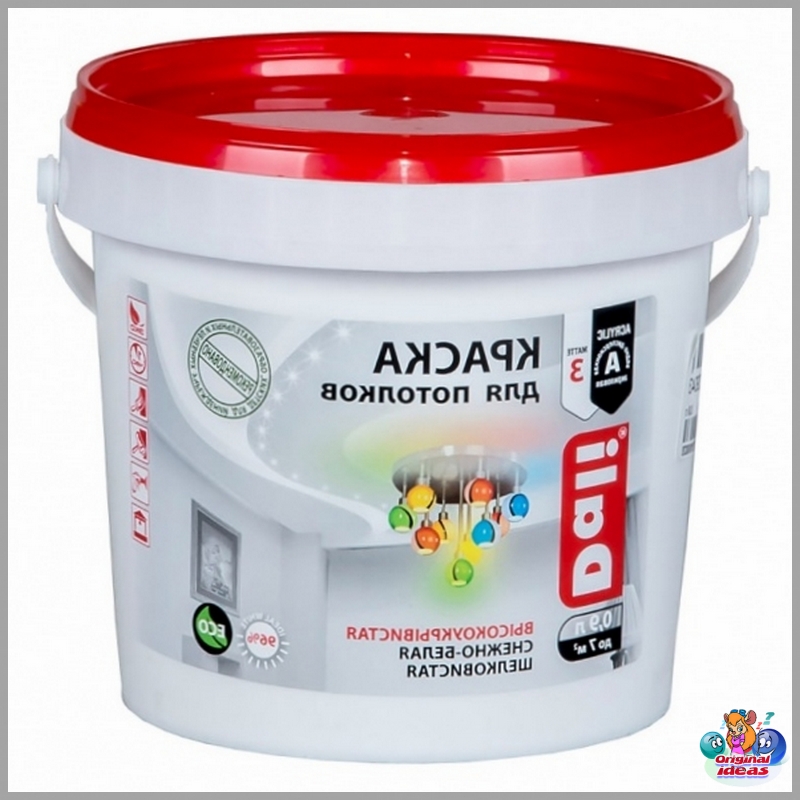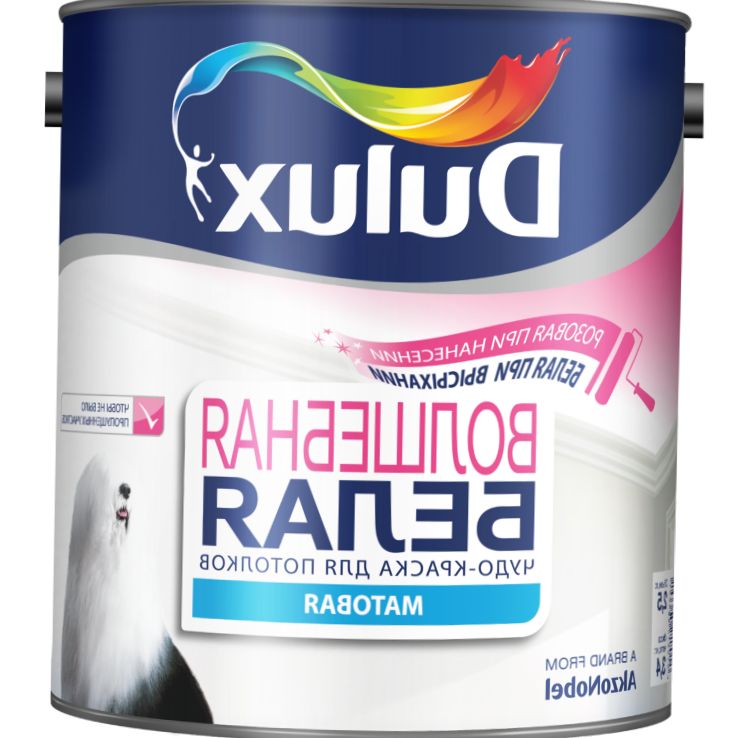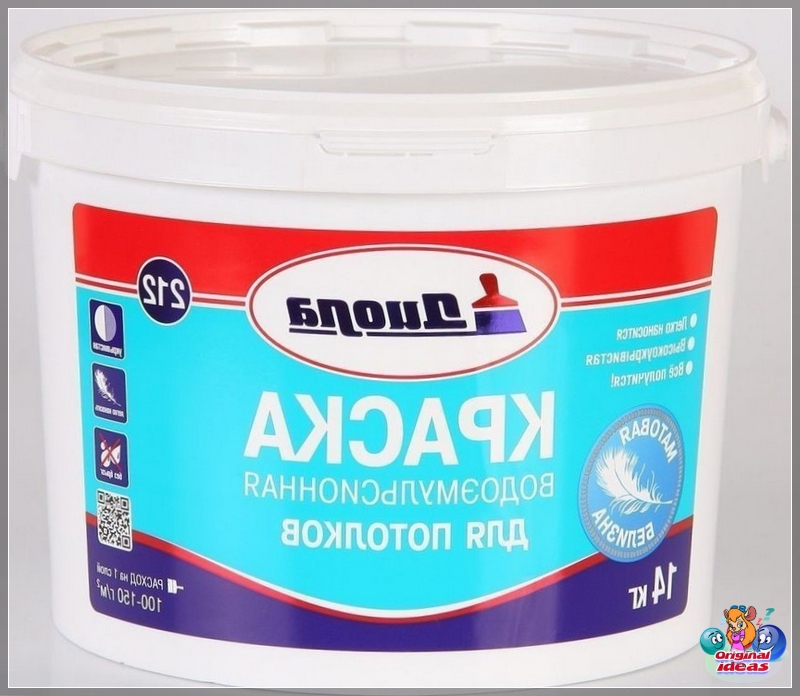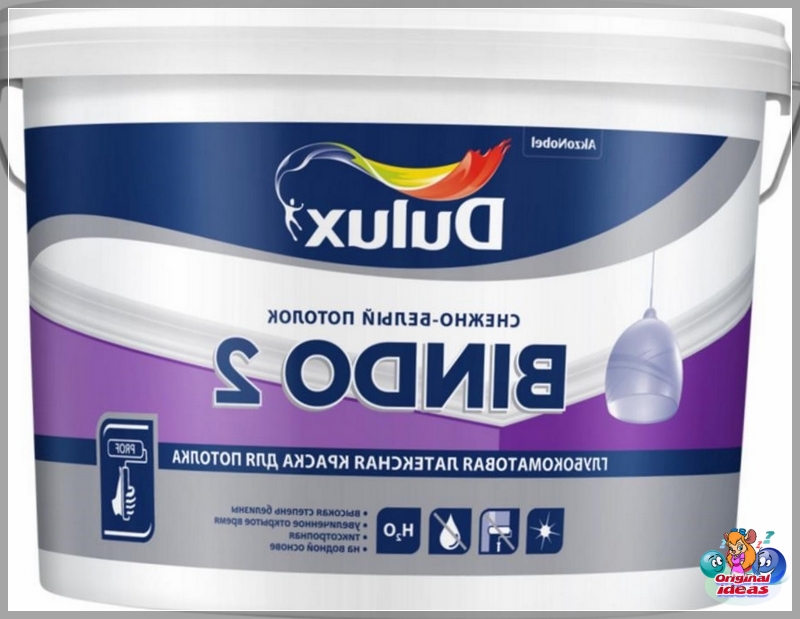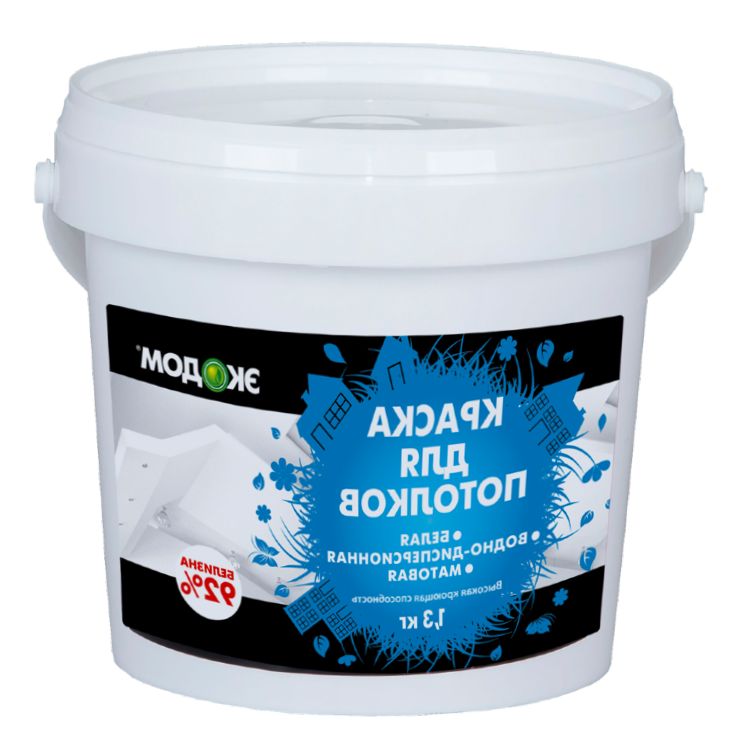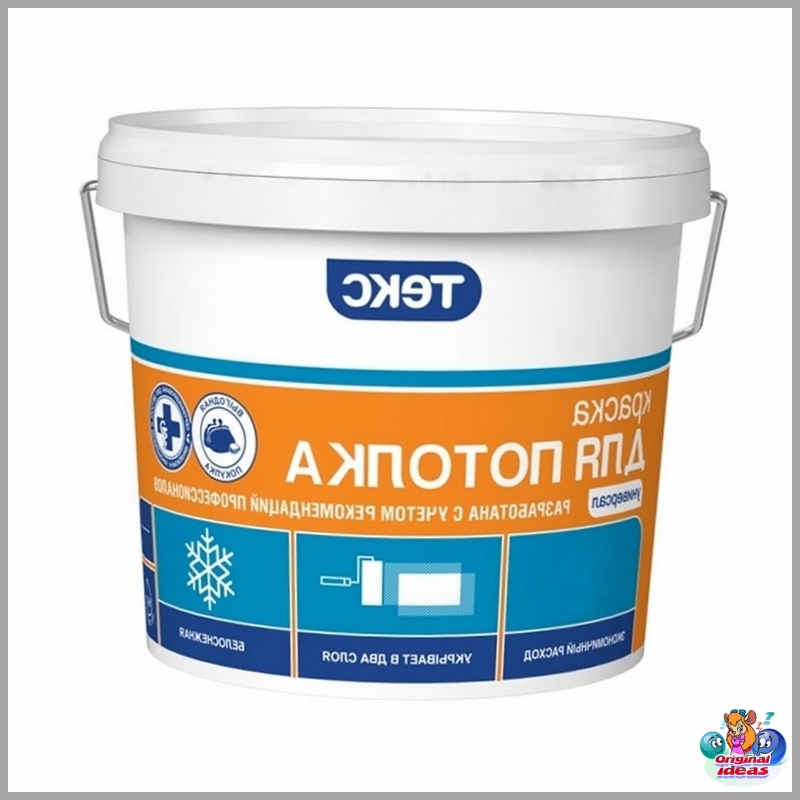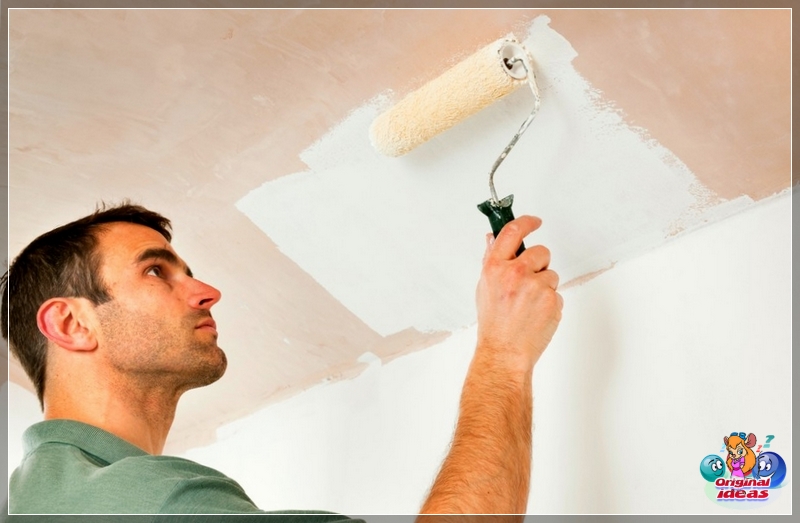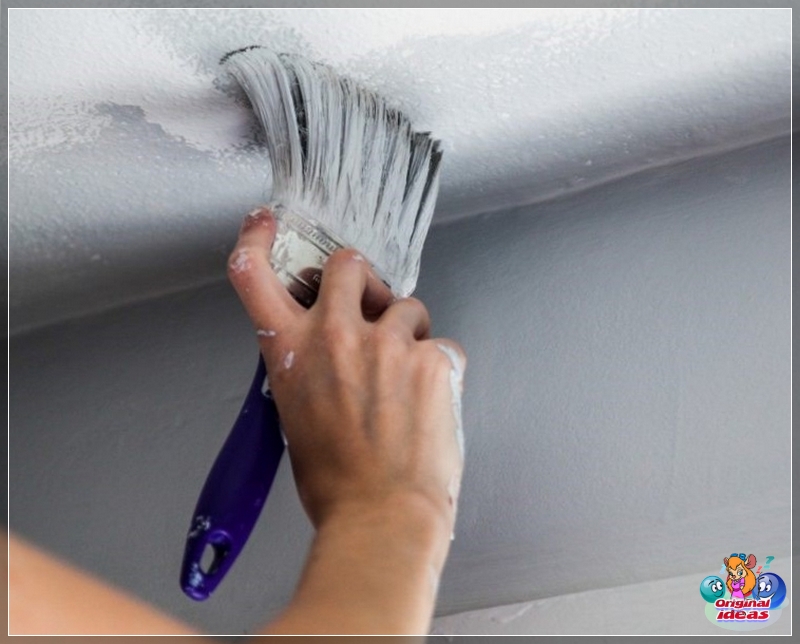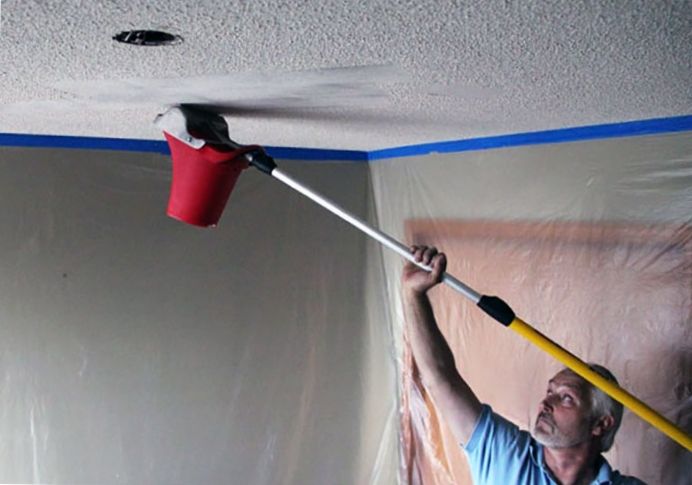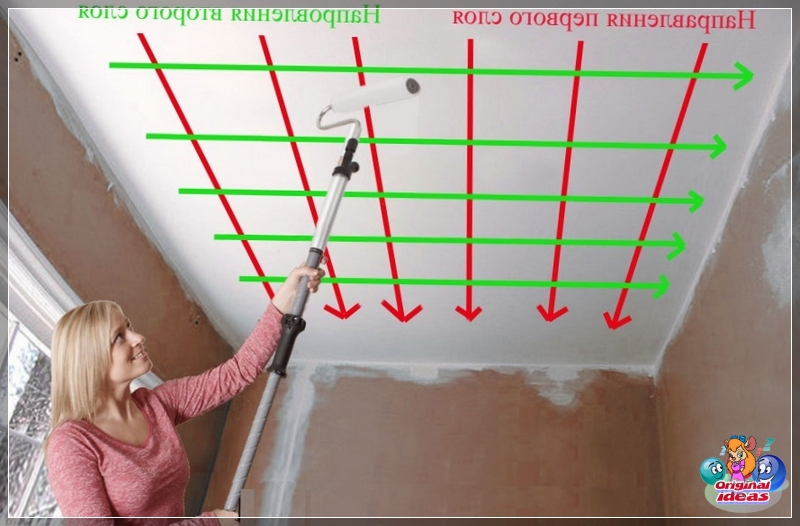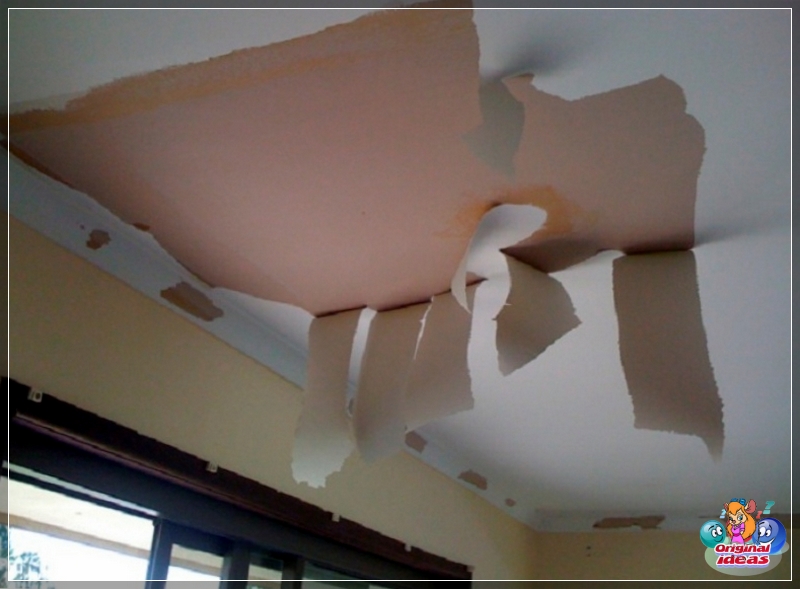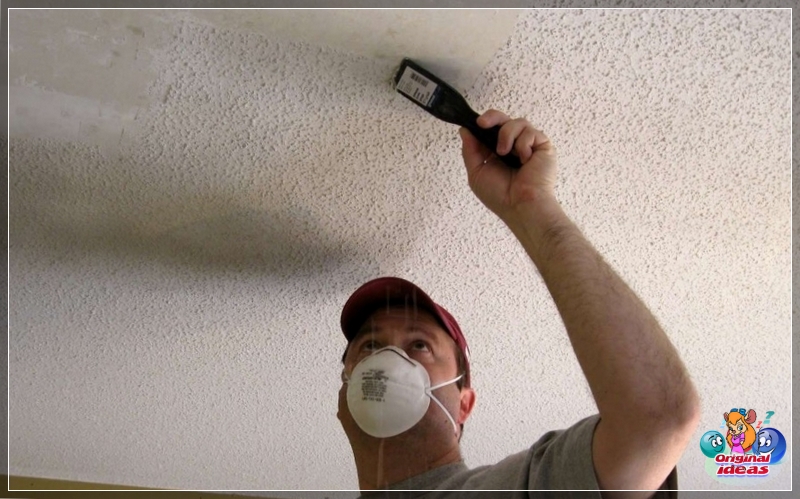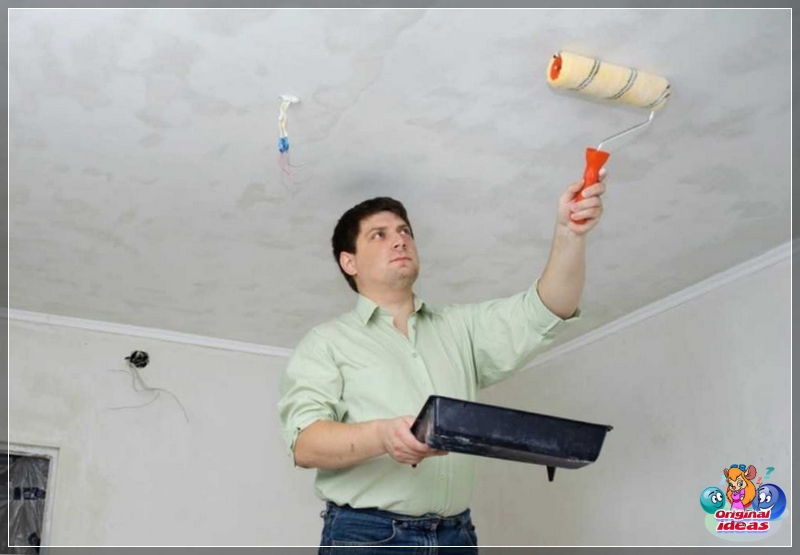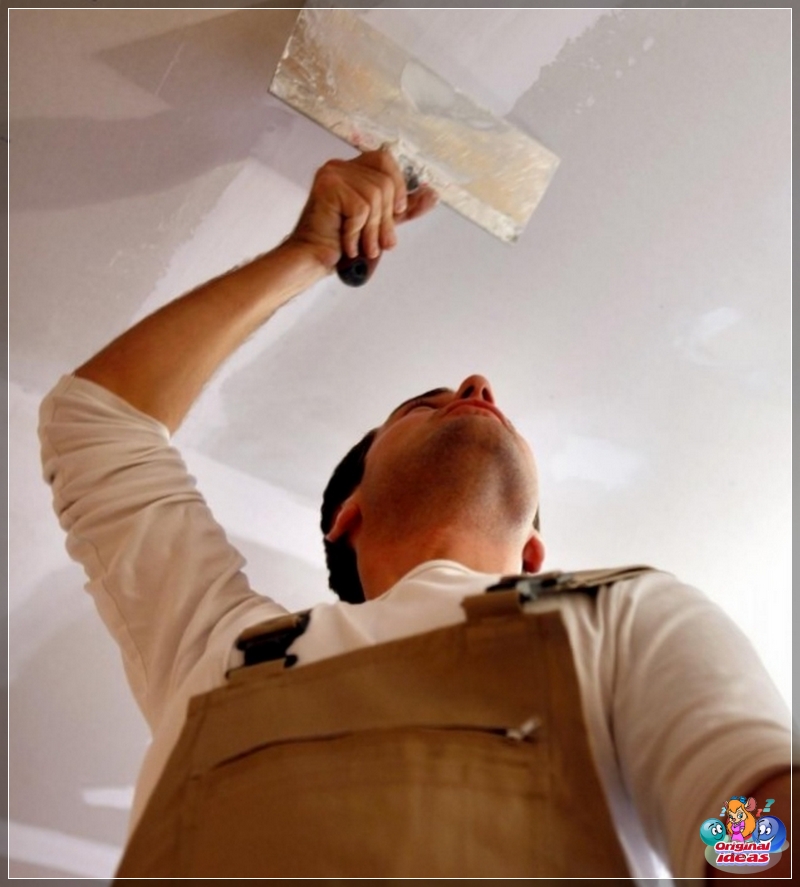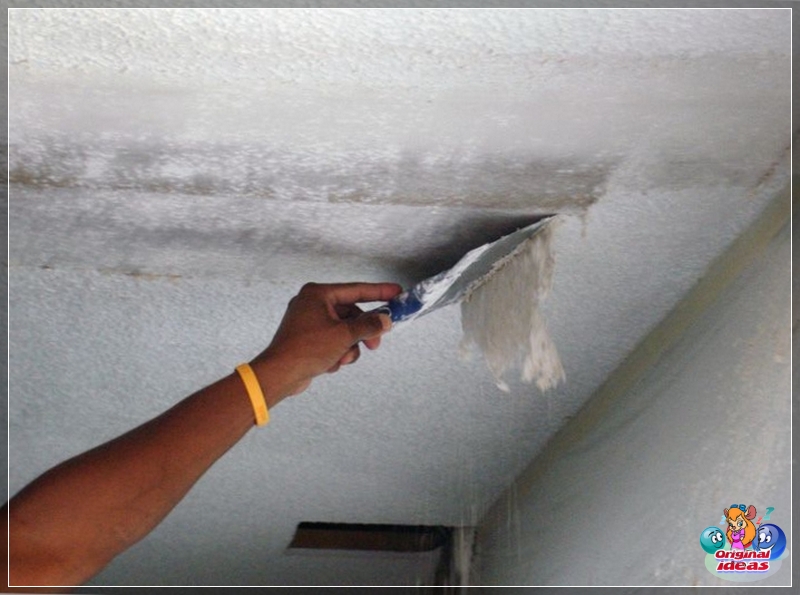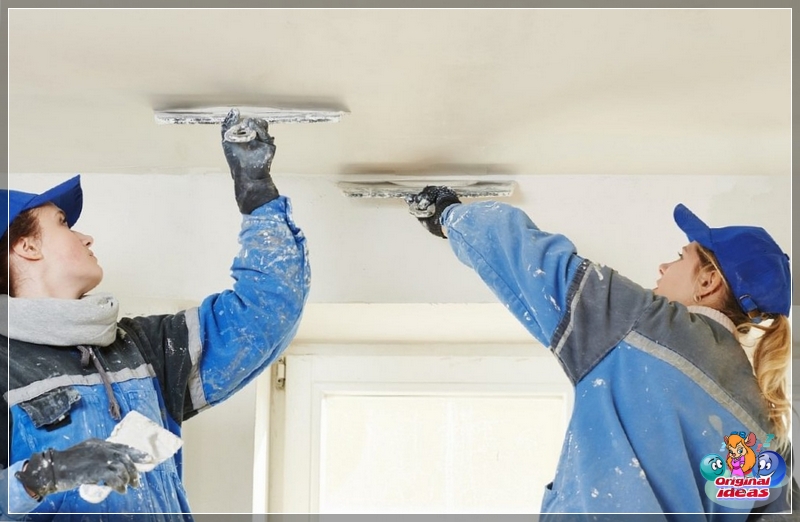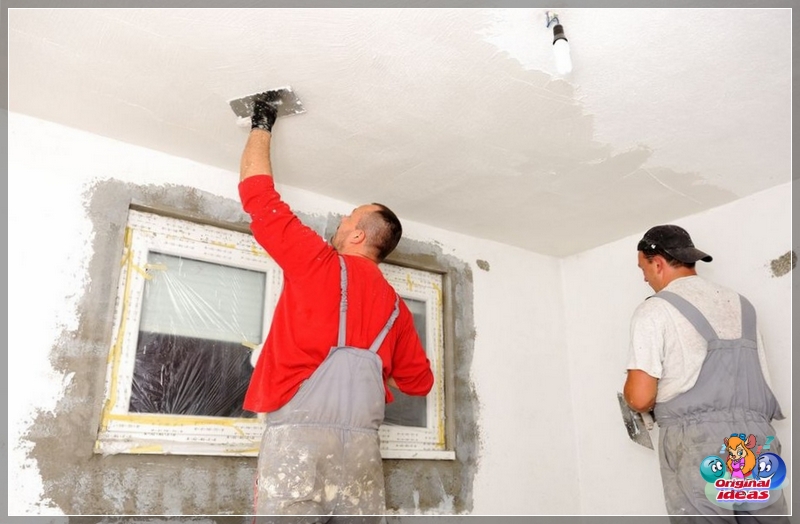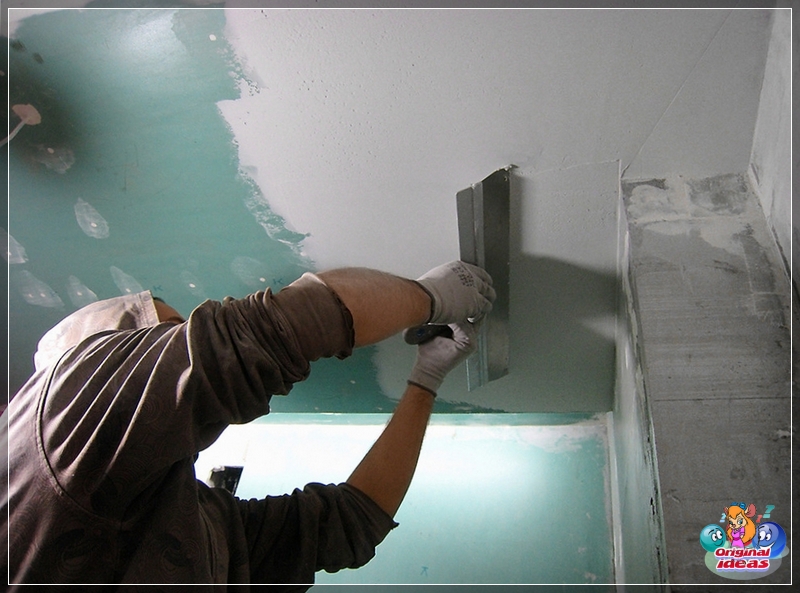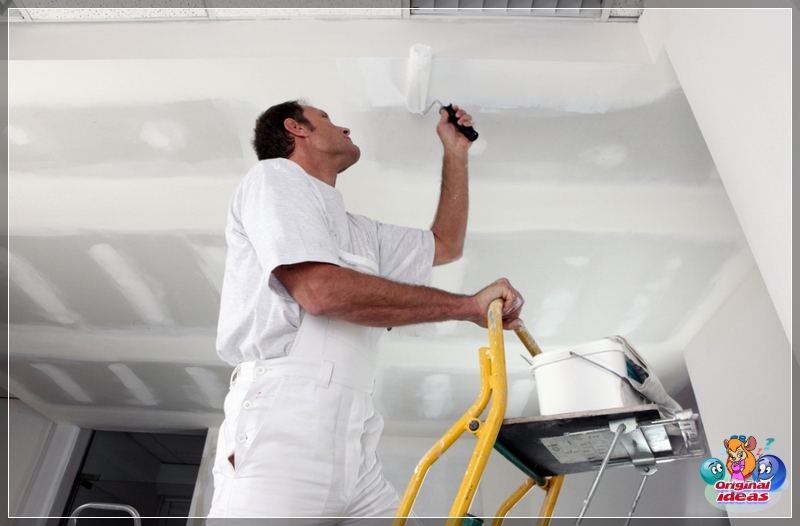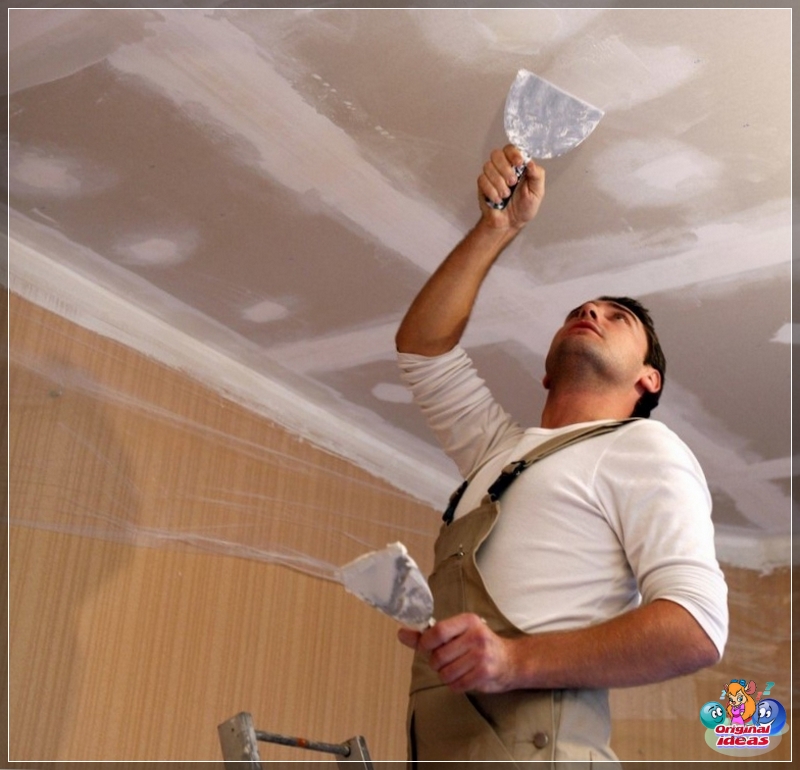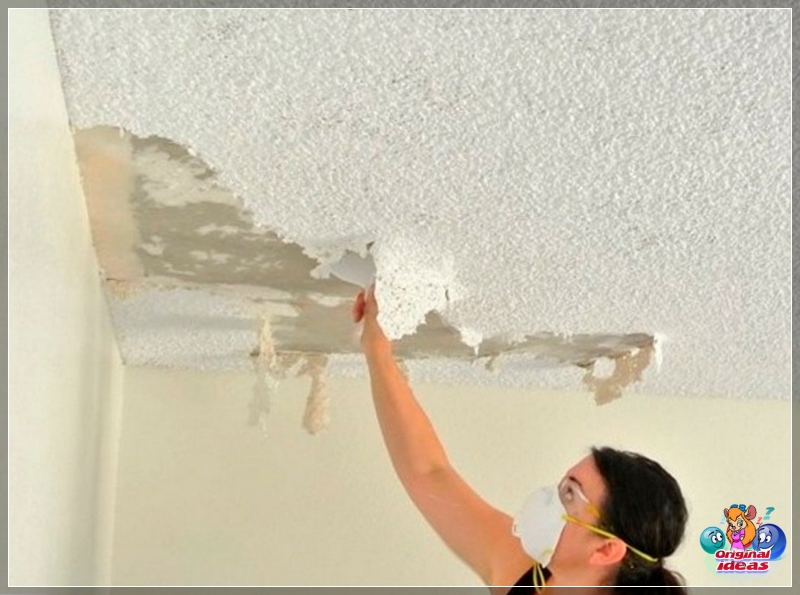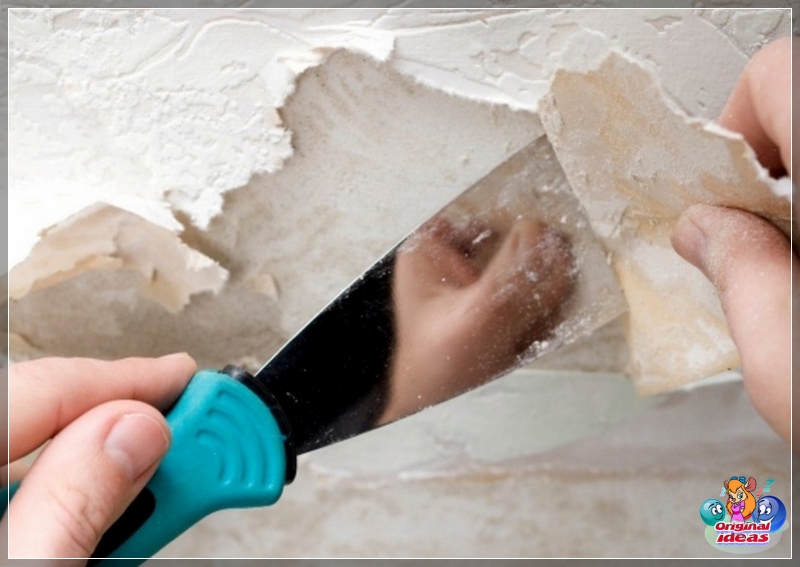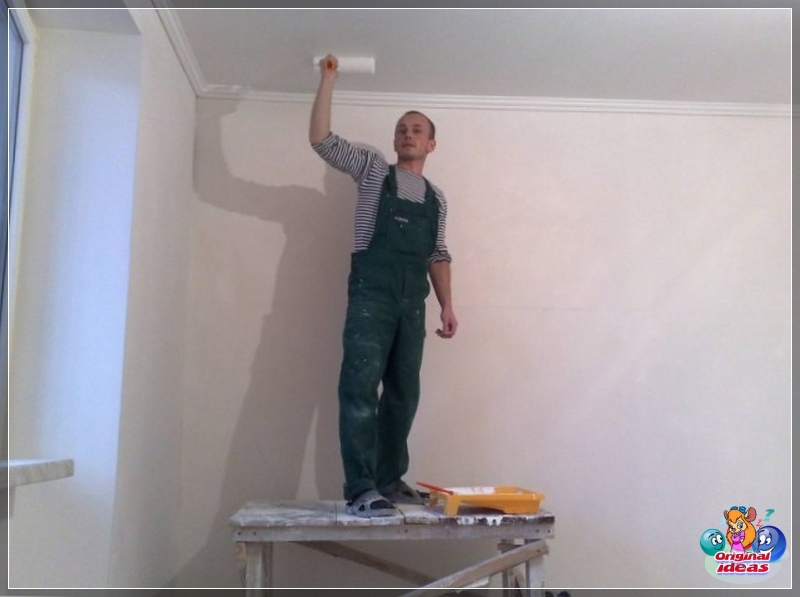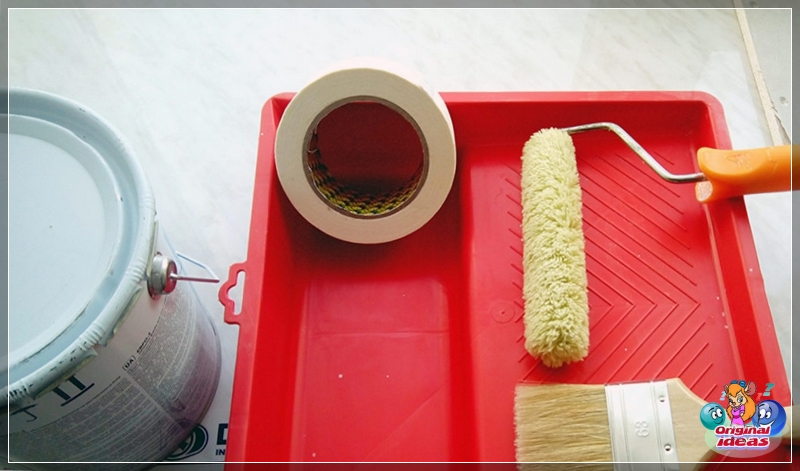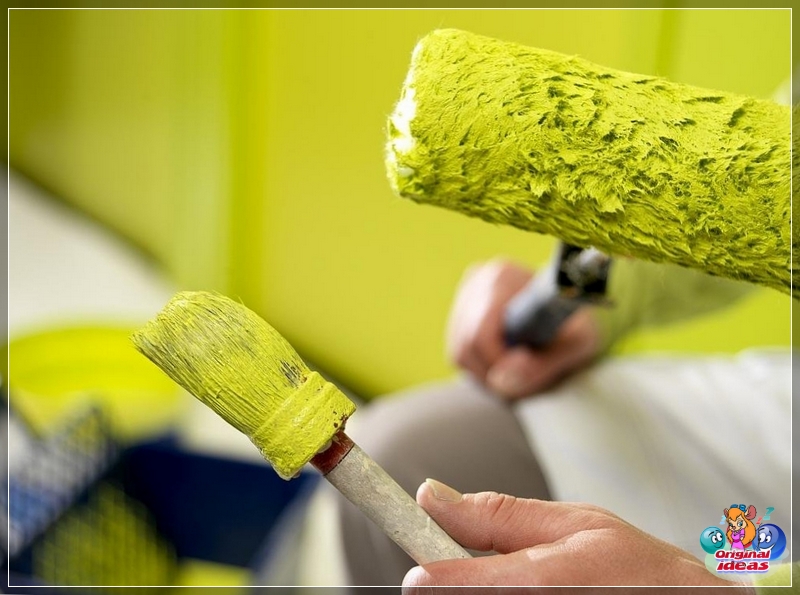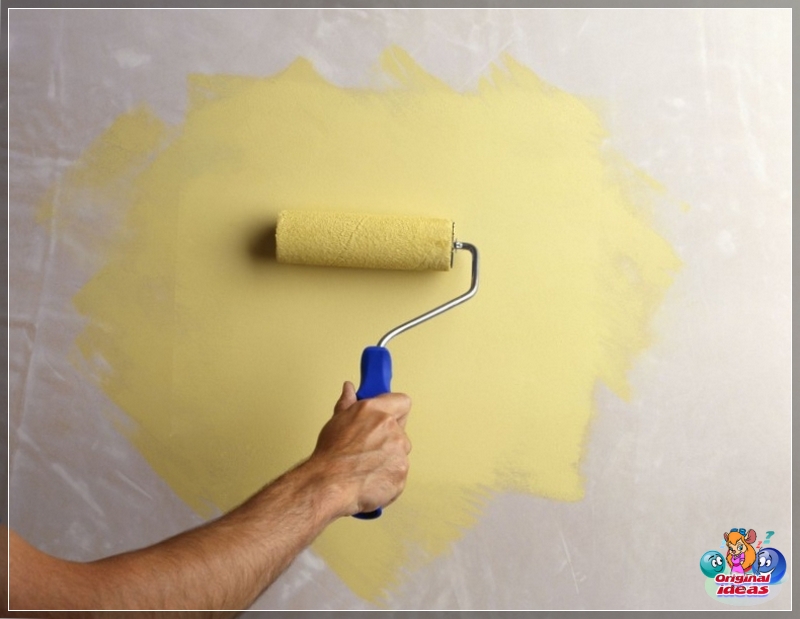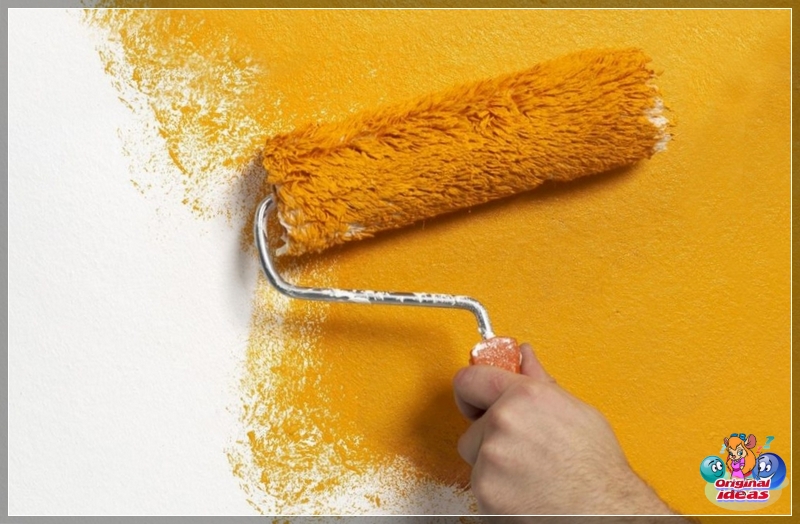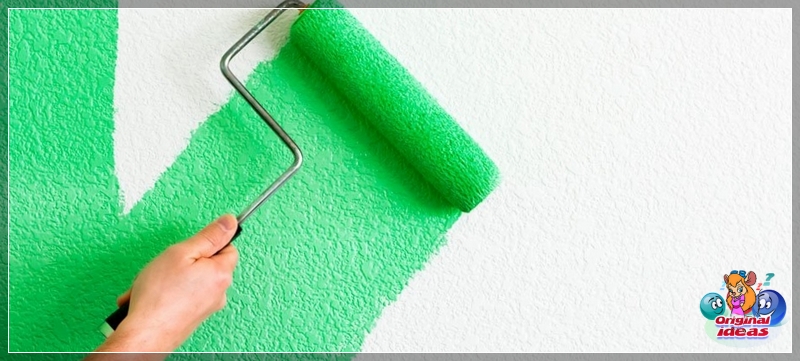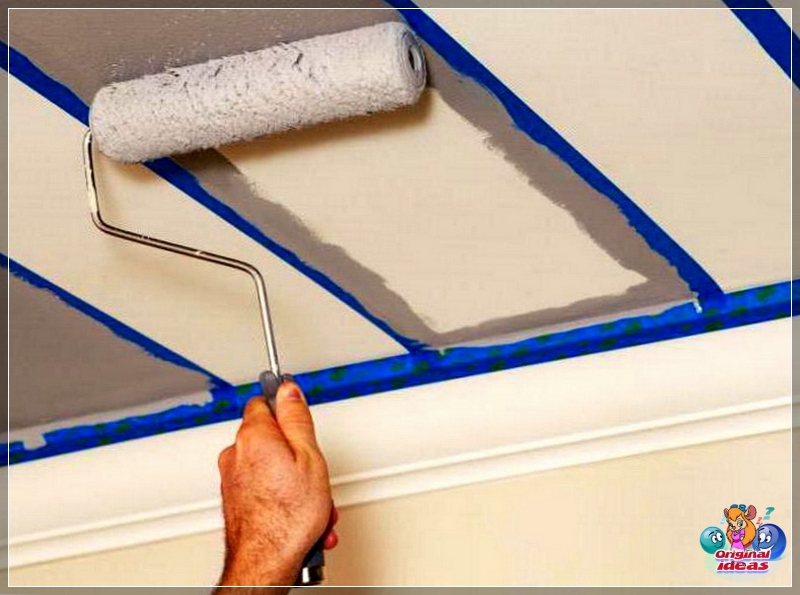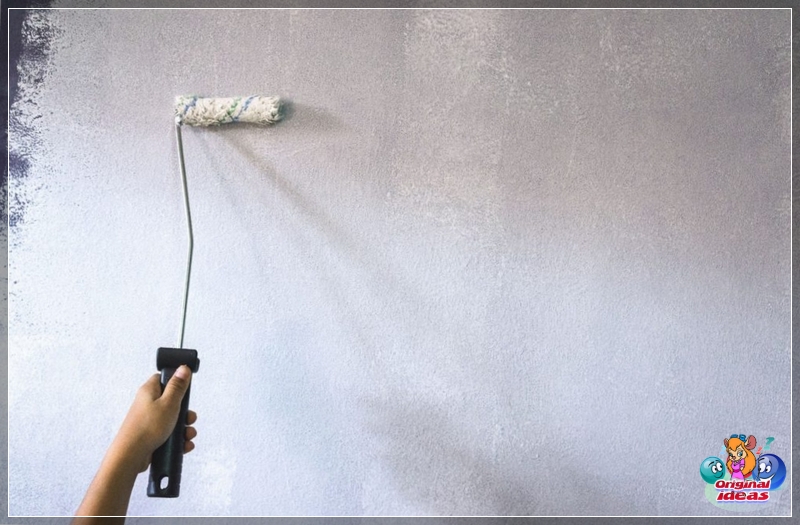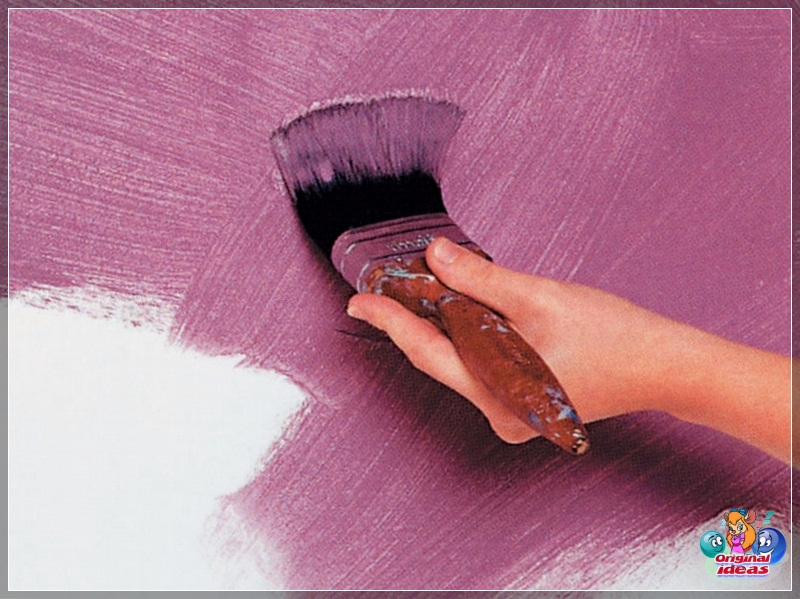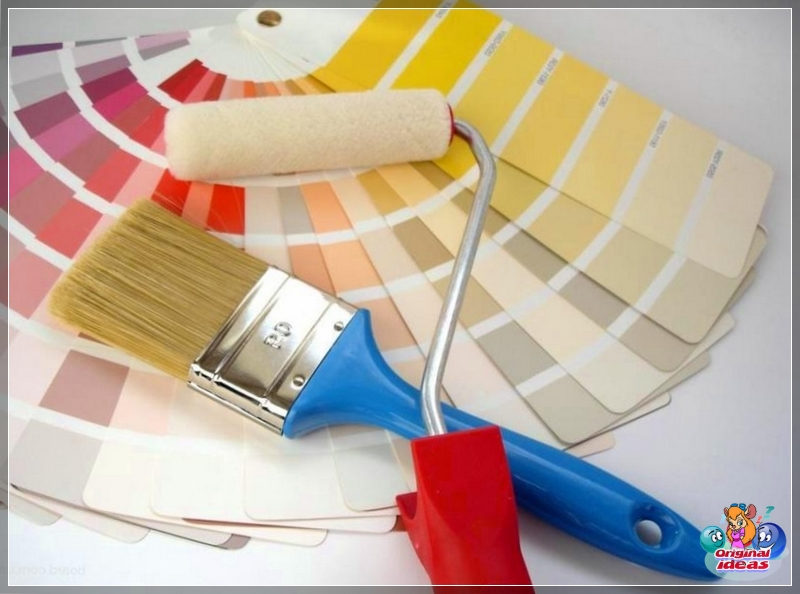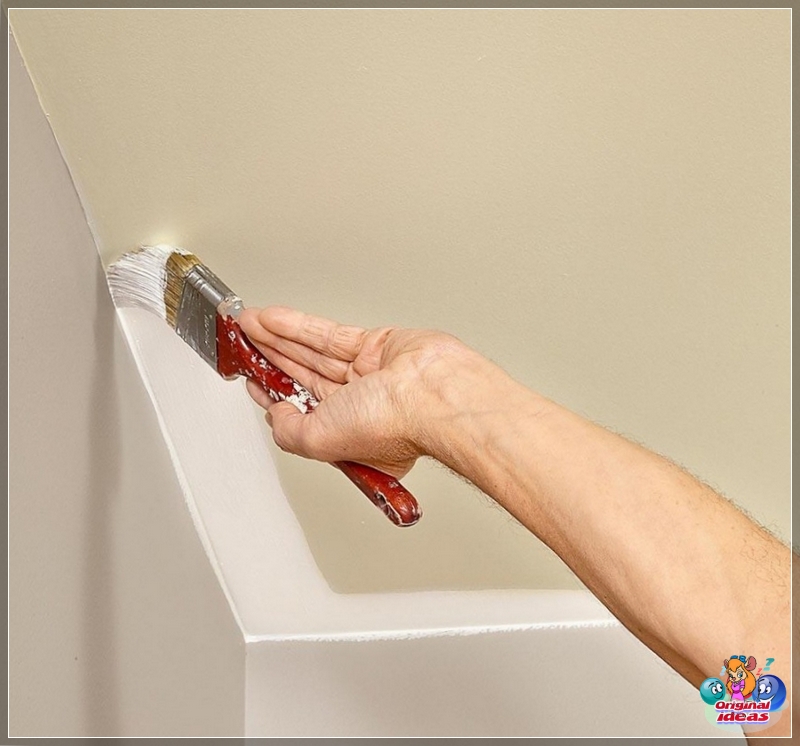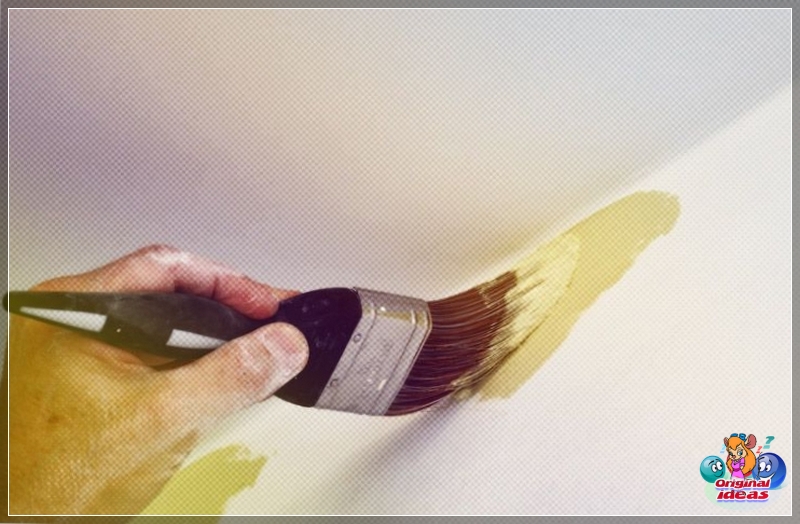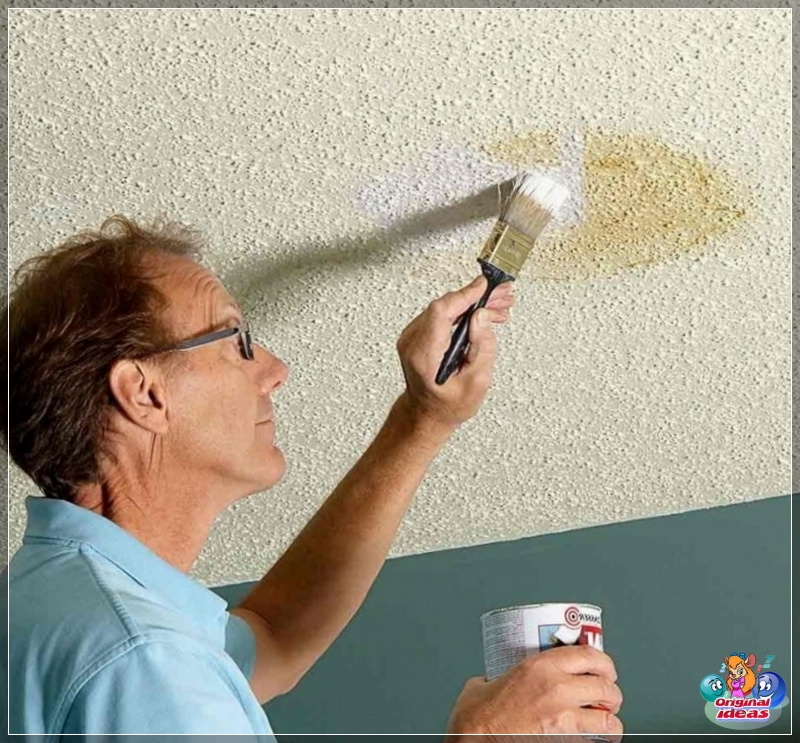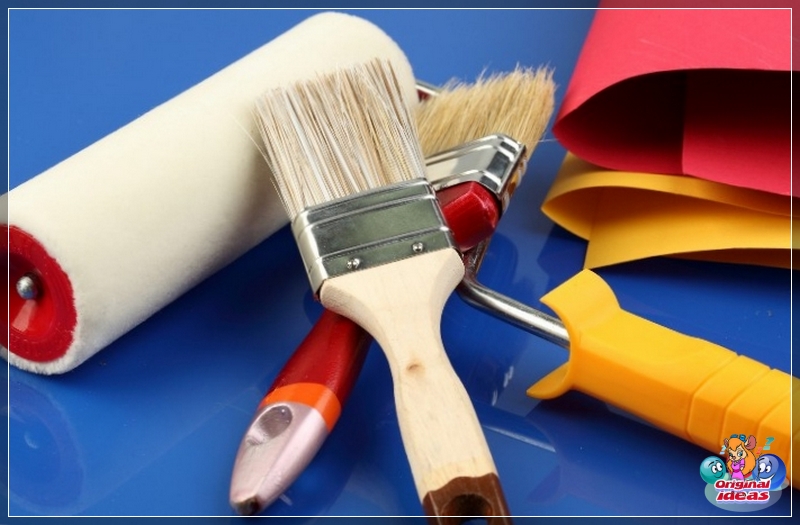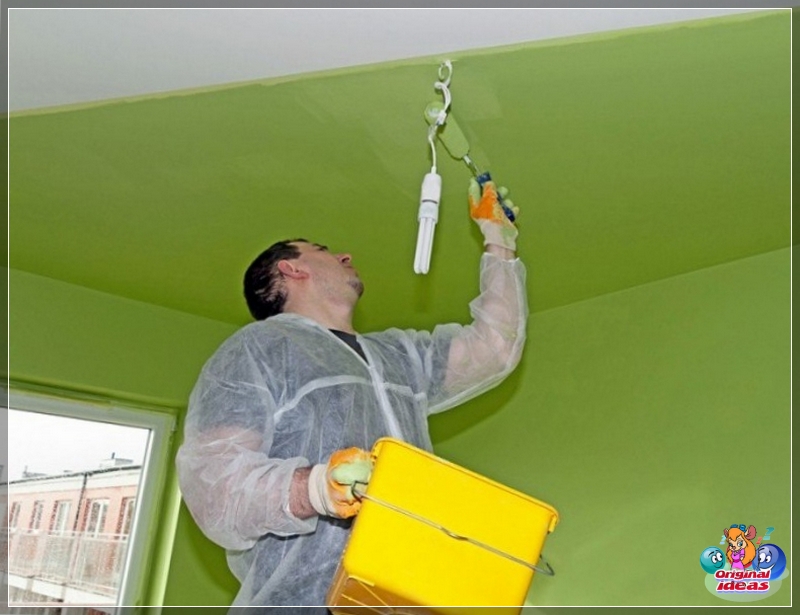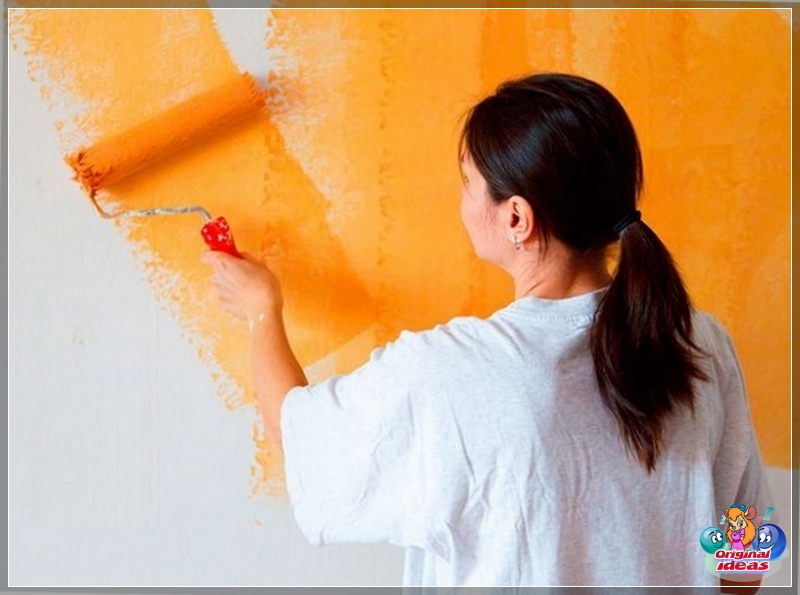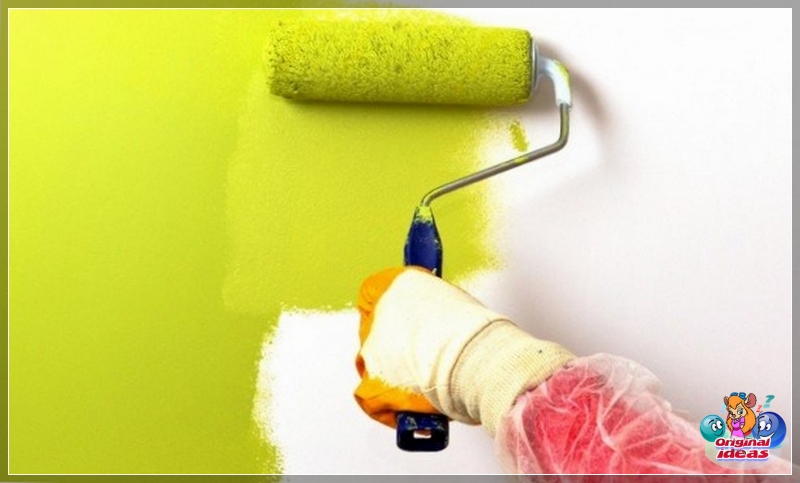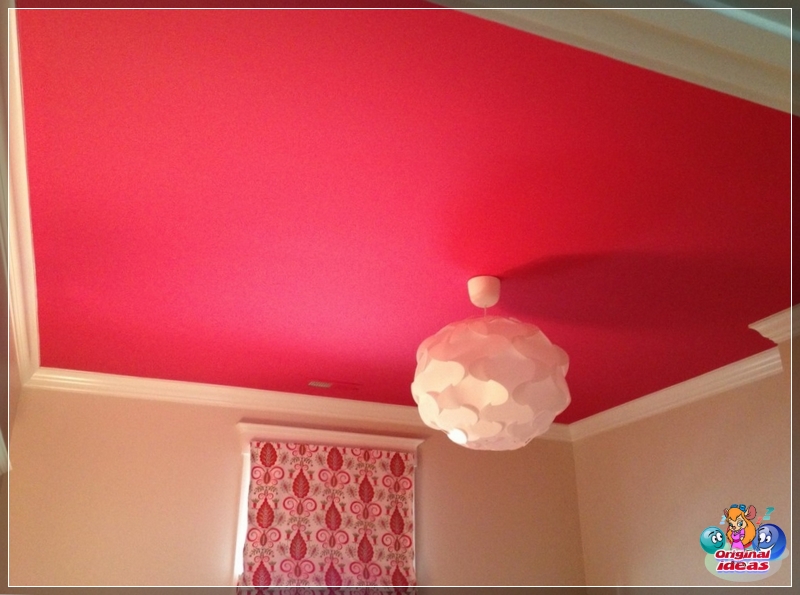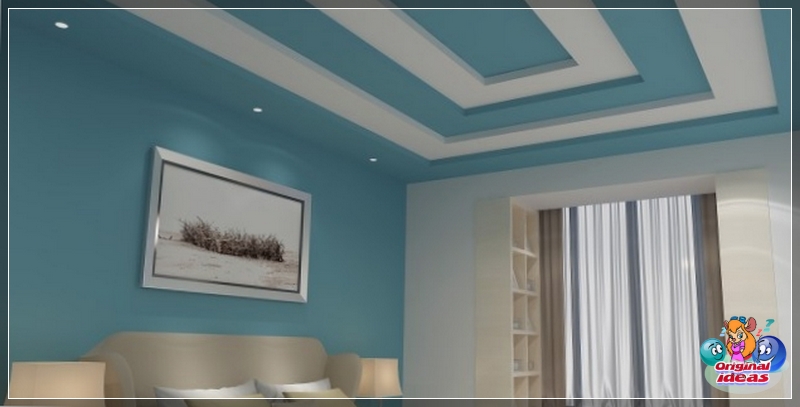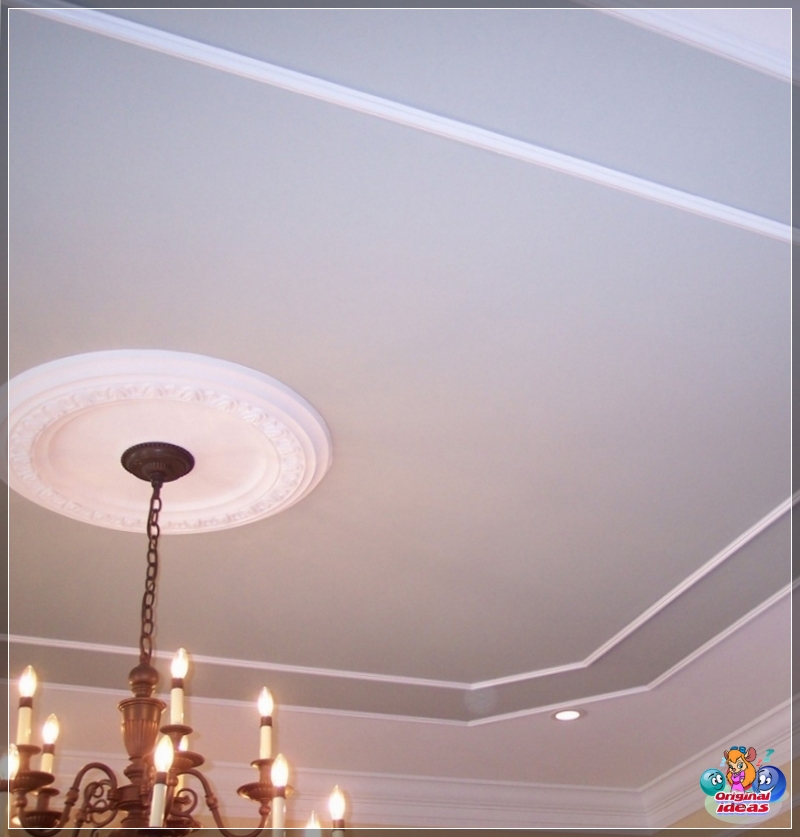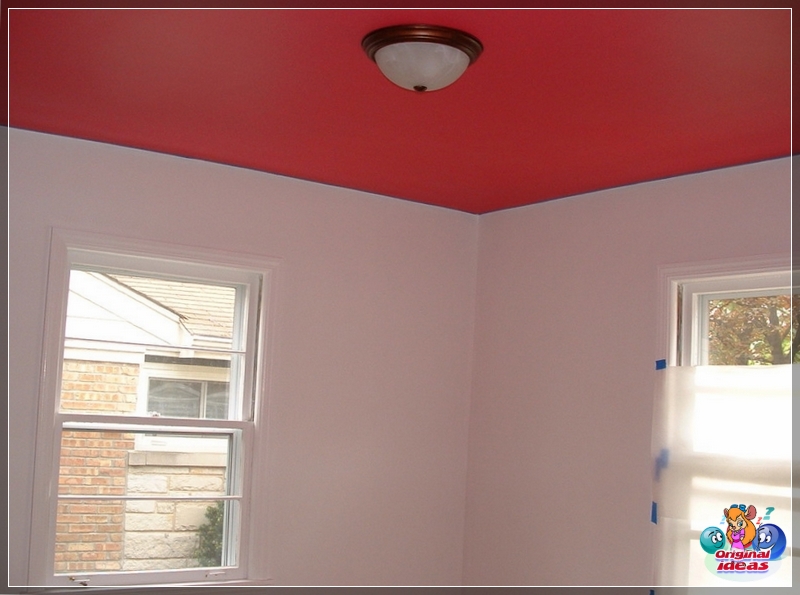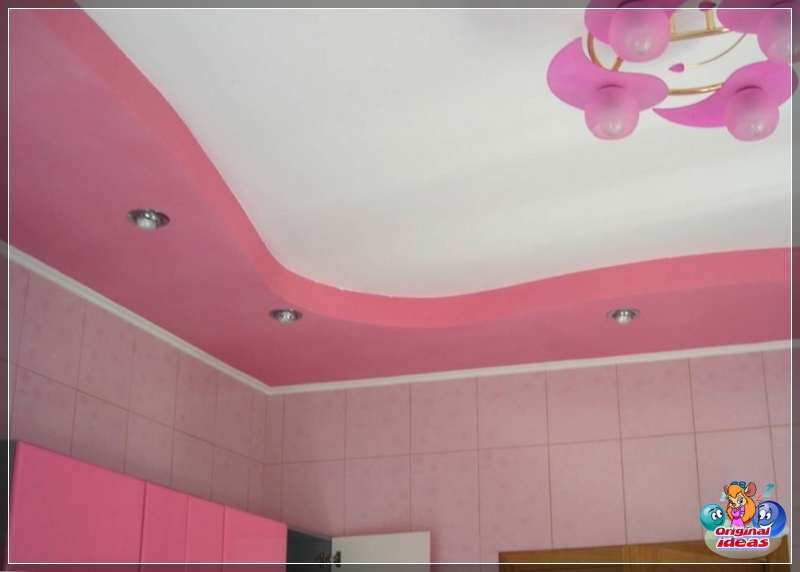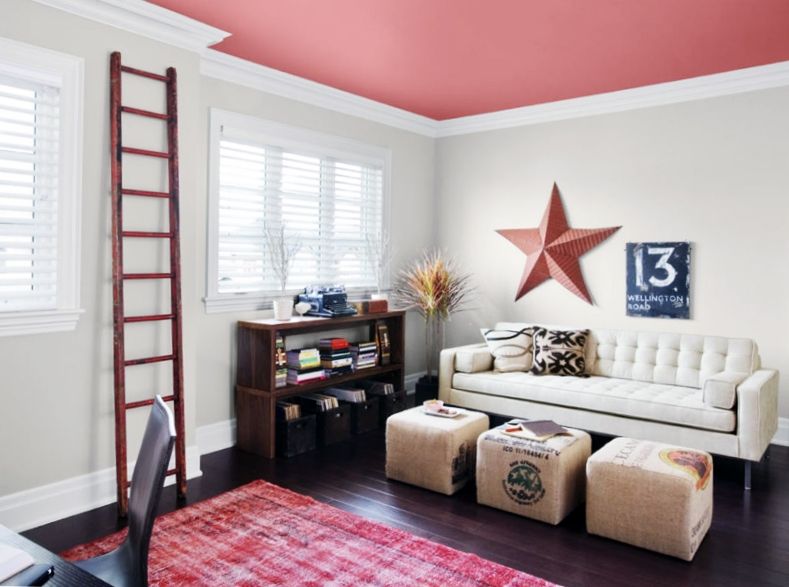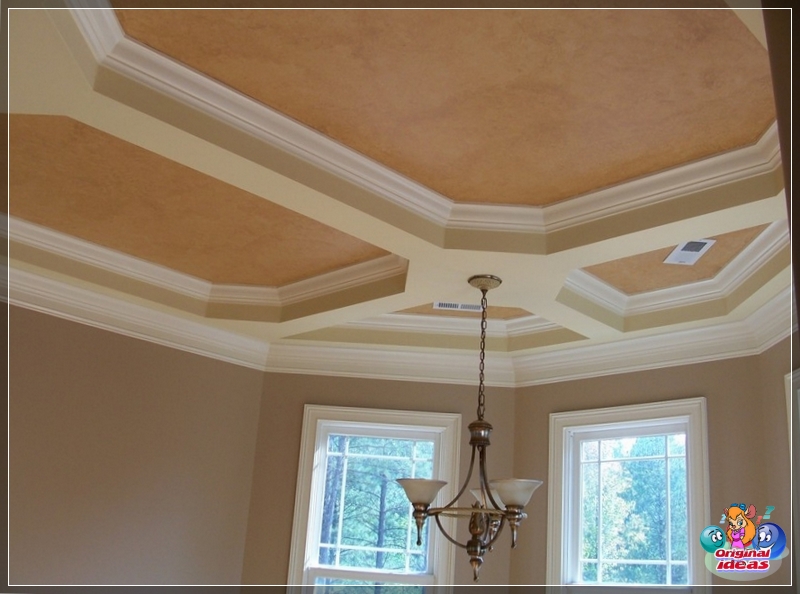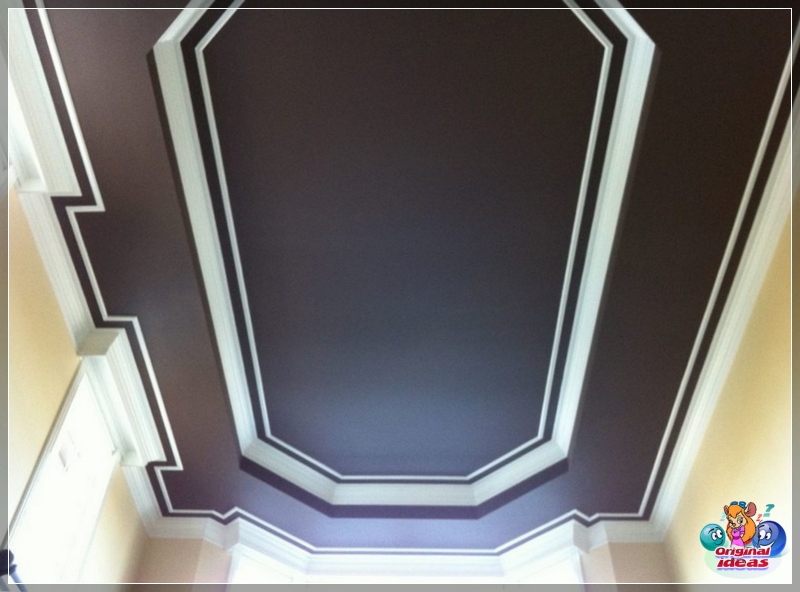Ceiling painting has been used in the arrangement of various premises for a long time, but even now it is considered the most common finishing method. This technology attracts with its simplicity. Almost any person can carry out this event, and without significant costs. At the same time, modern paints provide sufficient durability, practicality and attractiveness. A wide assortment allows you to satisfy every taste.
Features of the event
In fact, painting the ceiling is its finishing by applying a thin layer of paint to the leveled surface. The popularity of the method is determined by a number of advantages:
minimum reduction in ceiling height;
the simplicity of the method and the possibility of painting with your own hands;
the ability to use simple tools;
wide range of colors;
ease of further care;
affordable price.
By choosing the right materials, you can ensure the moisture resistance of the coating or, conversely, air permeability.
Painting problems are associated with the need for thorough surface preparation. An attractive appearance is ensured only with a perfectly flat ceiling. A layer of paint can only hide small cracks. Any irregularities are clearly visible after staining.
Ceiling decoration by painting can be done in several cases:
Painting directly on the leveled surface of the ceiling slab (most often on plaster).
Painting over wallpaper. White vinyl wallpaper is glued to the ceiling, which is painted in the desired color after the sticker.
Painting suspended or rough ceilings. In this case, the leveling of the surface is provided with sheet materials (drywall, plywood, fiberboard, chipboard, etc.). NS.) by gluing them to the ceiling or forming a suspension system.
Stretch canvas painting. It is often used for finishing white stretch fabric ceiling.
Separately, you can highlight decorative staining. Artistic painting of the ceiling or creation of frescoes is done by hand. This is a difficult option that requires certain artistic ability and skills. The choice of option depends on the type of room, the size of the ceiling and the degree of unevenness of the ceiling. In case of large irregularities, it becomes necessary to use suspended or tension structures.
What paints can be used
Nowadays, paints are produced on a different basis, which ensures their specific properties. For painting ceilings in residential premises, water-dispersible and water-diluted compositions are used. They are easily diluted in water, and after drying they form a sufficiently strong and dense film. The following positive qualities speak in favor of such paints:
ecological cleanliness and harmlessness when painting;
lack of odors;
relative water resistance, making it possible to carry out wet cleaning;
vapor permeability;
manufacturability.
The following types of paints can be distinguished:
Polyvinyl acetate based formulations. These are economy category paints. The main disadvantage is low moisture resistance, which does not allow them to be used in bathrooms, in the kitchen, in bathrooms, on the loggia.
Acrylic base. Such paints are widely used, because. To. optimally combine cost and quality. They are not recommended for use in bathrooms, but they have worked well in living spaces.
Silicate paint. Silicate or water glass significantly increases moisture resistance. The paints adhere well to concrete surfaces.
Silicone based paints. Such positive aspects of this paint are noted - repulsion of dirt, high vapor permeability, increased elasticity. It can be safely used in rooms with high humidity. The high cost of the material limits the use.
Latex paints. This is the most expensive type of water-based paints. But it is highly water resistant, which makes it suitable for use in bathrooms.
In addition to the base, when choosing a material, an important parameter should be taken into account - the type of surface of the formed paint layer. The most economical are matte paints, but they get dirty faster and visually reduce the height. The glossy variety is more expensive but looks more attractive. The disadvantages include the presence of chaotic glare from lamps and the manifestation of even the smallest defects on the surface. An alternative can be considered a semi-gloss (semi-gloss) paint, which occupies an average position between the previous options.
When choosing a paint, you should also take into account such criteria as the possibility of wet cleaning and covering ability (degree of coverage). Such parameters are indicated on the packaging (can). The latter characteristic determines the consumption of material per unit area and is directly related to its elasticity.
How to prepare the ceiling for painting
The paint cannot hide surface defects, and therefore leveling the base becomes the main task of the preparatory stage. In addition, it is necessary to clean the ceiling from dirt (especially grease stains), mold, fungi, and also to achieve maximum adhesion of the paint layer to the base.
Preliminary preparation includes the following activities:
Removing the old coating. First of all, you need to completely get rid of old paint and whitewash. Most often, a simple technique is used. The ceiling is moistened with a spray gun or foam roller. Water is applied twice with an interval of about 20-30 minutes. If, at the same time, a draft is provided in the room, then the peeling of the coating will significantly accelerate. The raw top layer is removed with a metal spatula. Old paint, firmly attached to the ceiling, can be removed with active solvents (hydrochloric acid solution or water-lime solution with the addition of alcohol). Areas with mold and fungi are treated with a 5% solution of copper sulfate.
Repairing cracks and dents, leveling the surface. First of all, the question of how to putty the ceiling for painting with your own hands is being resolved. Puttying is carried out in 2 stages. First, all cracks, gouges and gouges are sealed with a spatula. Large bulges and nodules are knocked down with a chisel (chisel) or removed with an abrasive wheel (grinder). Leveling is provided with a ready-made putty mixture for interior work, its base is cement or gypsum. A thin leveling layer is applied over the entire surface of the ceiling. If a significant unevenness of the floor is revealed, then plastering is carried out along the beacons with the imposition of a cement-sand or cement-lime-sand mortar up to 5 cm thick. The leveled surface is processed with a sanding paper, sander or trowel mesh.
Do I need to prime the leveled surface? Experts unequivocally consider such a process to be necessary. It is recommended to use a deep penetration primer. It penetrates into the coating, securing it and providing good adhesion to the paint. Without a primer, the paint layer is more likely to peel off. The composition is applied to the hardened coating 2-3 mm thick using a paint roller or brush. After hardening, a fine sanding of the entire ceiling surface is ensured.
Features of the dyeing process
After the formation of a perfectly flat surface of the ceiling, you can start painting it. To do this, you need to decide which tool to use, familiarize yourself with the peculiarities of using a particular paint and the basic rules for painting.
Which tool is better to use
You can paint the ceiling with the following painting tool:
Brushes. Paint brushes are the simplest and most common hand-held painting tools. With their help, you can paint large areas, however, such an event is quite laborious, and it is difficult to ensure high quality. When painting ceilings, brushes are mainly used in hard-to-reach and problem areas, corners, joints with the wall, ledges, areas near the chandelier, etc. NS. Best flat brushes with natural or polyester (nylon) bristles. For painting flat surfaces, a tool 12-20 cm wide is suitable. In problem areas, brushes with a width of 40-50 mm are more effective, and for finishing corners and joints, you need to have brushes with a width of 20-30 mm.
Ceiling paint roller. With this tool, with little skill, anyone can paint the entire ceiling surface quickly and efficiently. It should be chosen according to the length of the handle and the height of the pile on the "fur coat". For the convenience of painting over the head, elongated handles are more suitable, and the specific size is chosen by the painter himself at his discretion. When applying paint over plaster or drywall, a medium-pile roller should be used. For smooth primed surfaces, a short pile is more suitable. Long pile is required when painting embossed areas.
Spray guns. You can mechanize the painting process using painting machines. With their help, the paint is sprayed immediately onto a sufficiently large area, and the smooth movement of the sprayer allows you to uniformly paint a large area. Working with a manual spray gun requires the participation of 2 people - one creates pressure with a pump, and the second directs the jet to the right place. You can automate the supply of paint using electric spray guns. In particular, modern airless painting equipment (compressor) has become widespread.
When painting the ceiling with your own hands, you should also prepare auxiliary devices in advance. The roller requires a special container in the form of a tray with a platform for even distribution of the composition over the "fur coat". When using brushes, you need a convenient small container that you can hold in your hand, and at the same time, into which the brush can easily enter. Working on the ceiling is impossible without a reliable stepladder of the required height.
Implementation of painting
When self-painting the ceiling, you should take into account the following recommendations:
Painting is done in the following sequence: the corner farthest from the door, other corners and joints with the wall, other problem areas, the main ceiling surface.
The paint is applied in parallel stripes (strokes), starting from a wall with a window, with an overlap. The boundaries of the strokes are gently smoothed until the composition dries.
Paint is applied in 2-3 layers. The bottom layer is formed by stripes parallel to the stream of light from the window, and the next layer - with strokes perpendicular to the first layer. The third layer is applied similarly to the lower one. Before applying the next layer, it is necessary to allow time for the already applied paint to dry.
Painting work can only be carried out in good lighting.
It is important to take into account that any area painted additionally will stand out against the general background. If areas with poor-quality painting are identified, then you will have to apply another layer of paint on the entire surface of the ceiling.
Work with a paint roller is carried out in the following sequence:
Application of paint in corners and joints with a brush 20-50 mm wide. The painted layer must extend to the ceiling at a distance of at least 4-6 cm.
Pouring the composition into a tray and ensuring the desired consistency.
Refilling the roller with paint. To do this, the "fur coat" is dipped in paint, and then the roller is rolled along an inclined platform until the composition is evenly distributed throughout the "fur coat". When rolling, a slight pressure on the handle is provided.
Starting from the far corner, the paint is applied in parallel stripes with an overlap of 3-5 cm. It is recommended to hold the tool at an angle of about 45 degrees and move towards you. Movements should be smooth and even.
Excess composition is removed by rolling a roller when there is no paint left in the "fur coat".
When using a paint brush, the following main nuances should be considered:
Use a small but handy paint container to paint with a brush. Fully filled, it should be easy to hold in one hand. The brush should pass freely through the neck.
Excess mass when dipping the brush is removed by lightly pressing it on the edge of the container. To prevent paint dripping onto the floor, close the bottom of the container with a cloth. It is recommended to attach a similar protection to the base of the hand grip.
When painting, the brush is held at an angle and moves in the same way as in the above case.
Spray guns are used strictly in accordance with the instructions for the device. It clearly indicates the required consistency of the composition and the amount of filling. During painting, the spray nozzle is held at a distance of 0.6-0.8 m from the ceiling surface. This distance should be kept the same throughout the entire painting process. It is important to ensure uniform movement of the jet, without stopping in one area.
Conclusion
Ceiling painting remains one of the most popular ways to decorate a room. It allows you to provide the desired design, a reliable and practical ceiling covering. High-quality painting can be done by hand, but for this you need to choose the right paint and carry out painting work, taking into account the recommendations of specialists.
